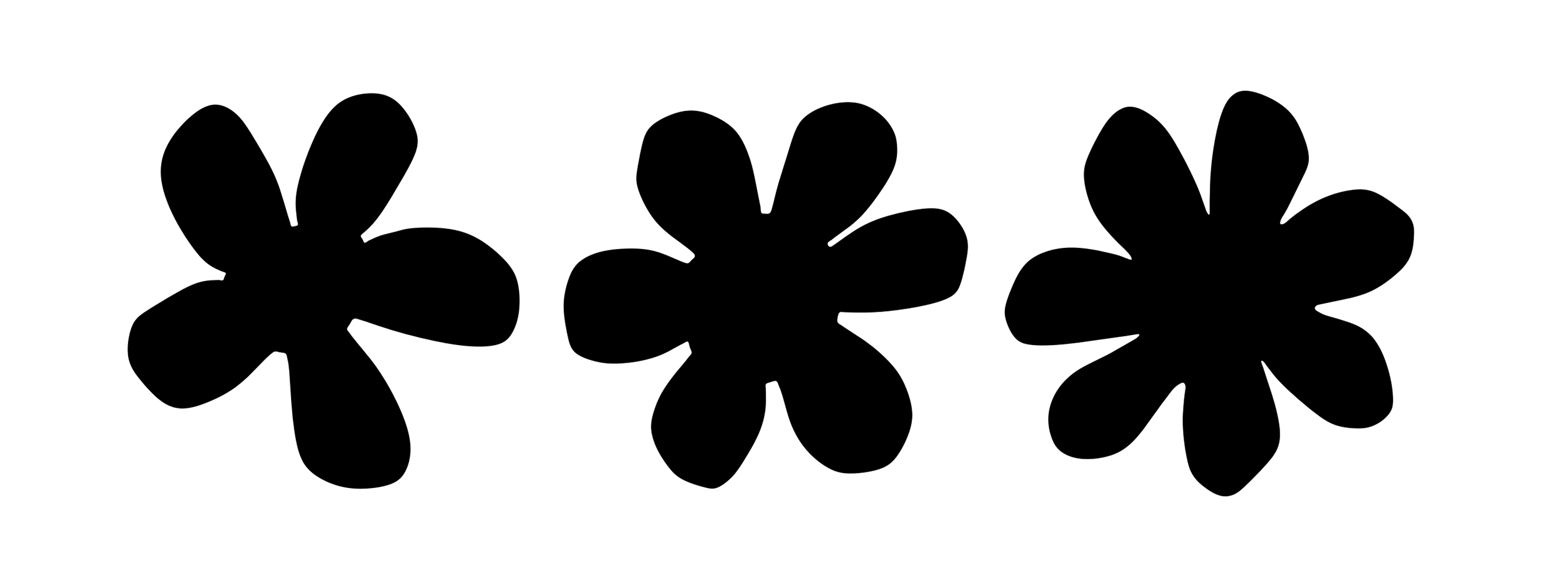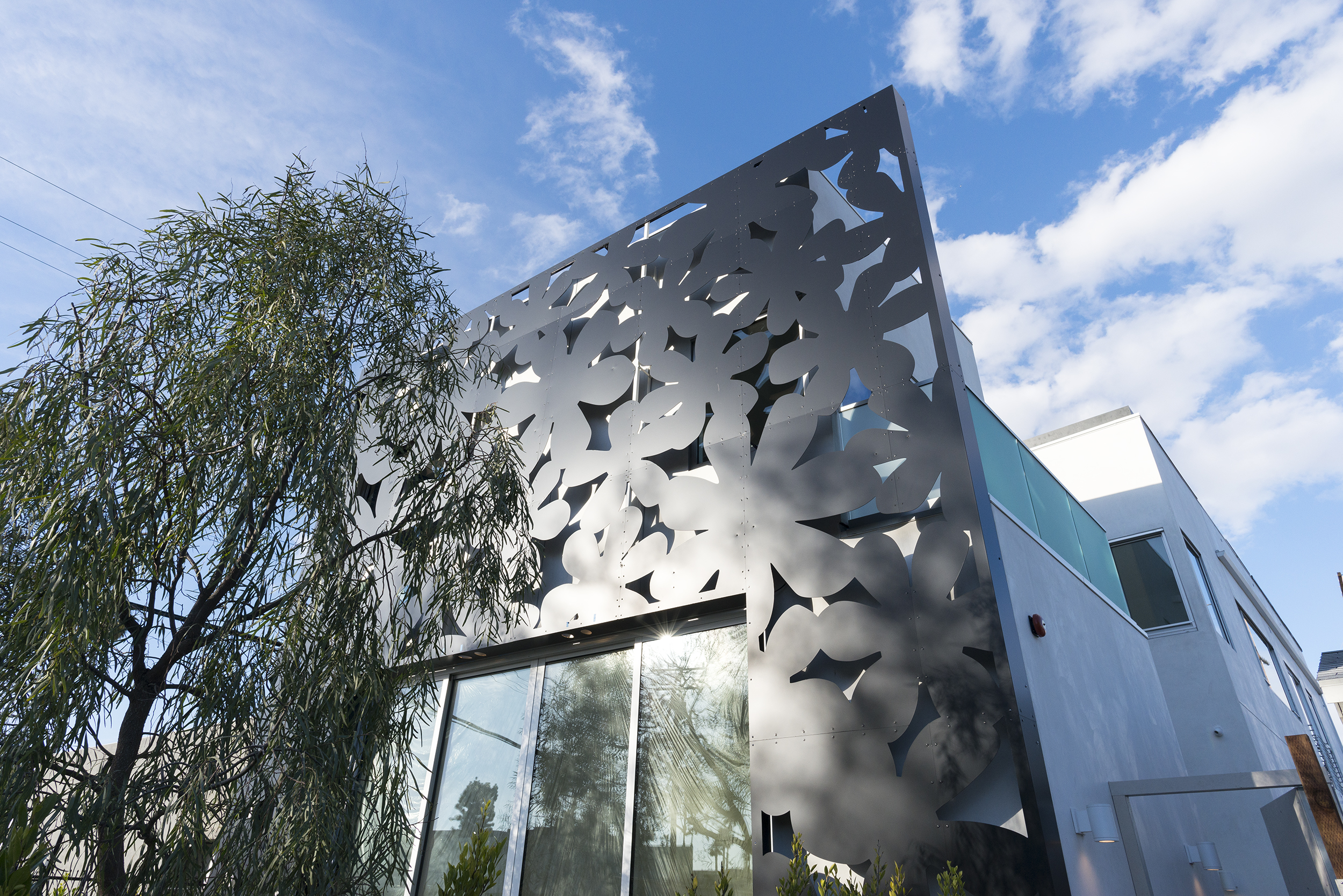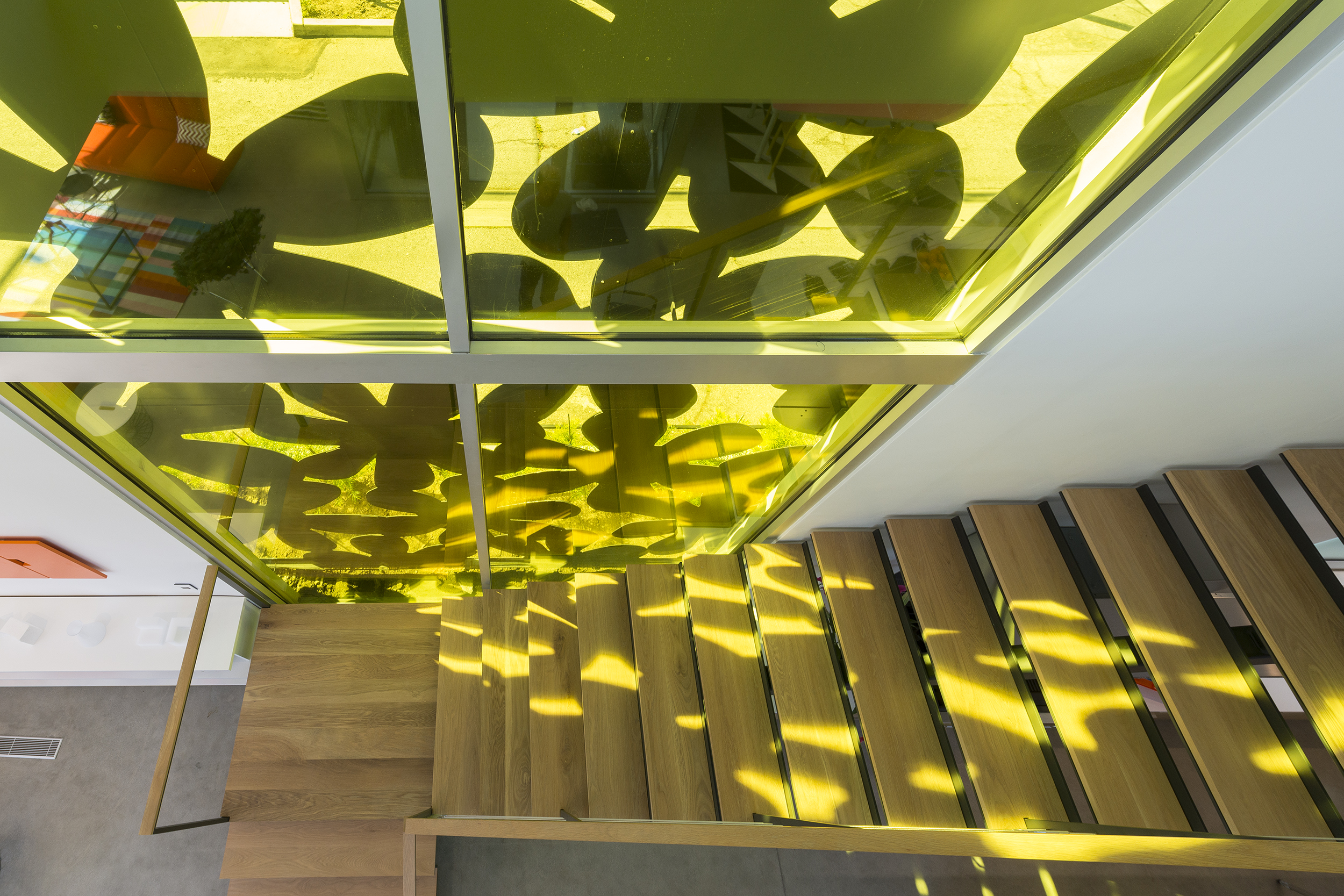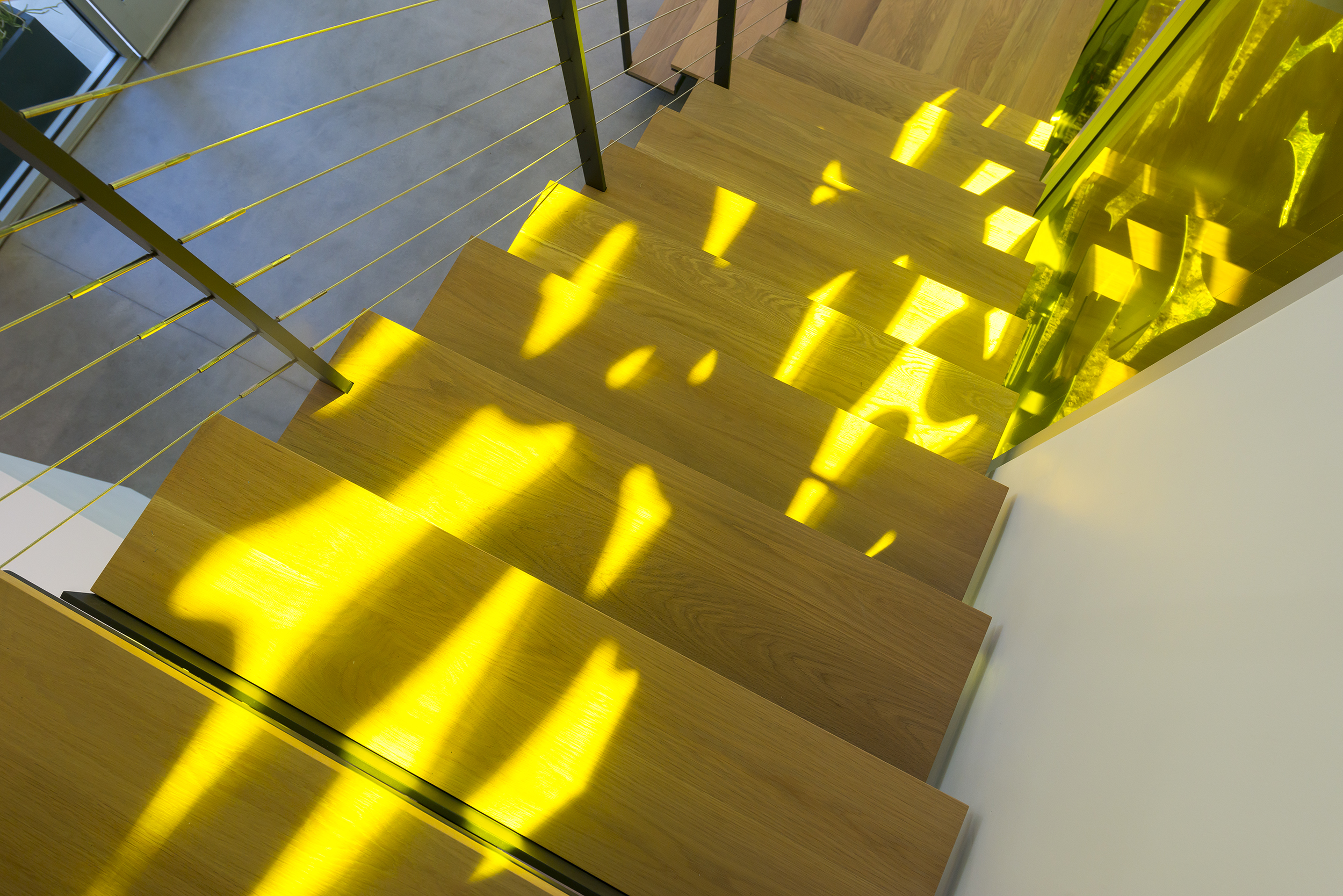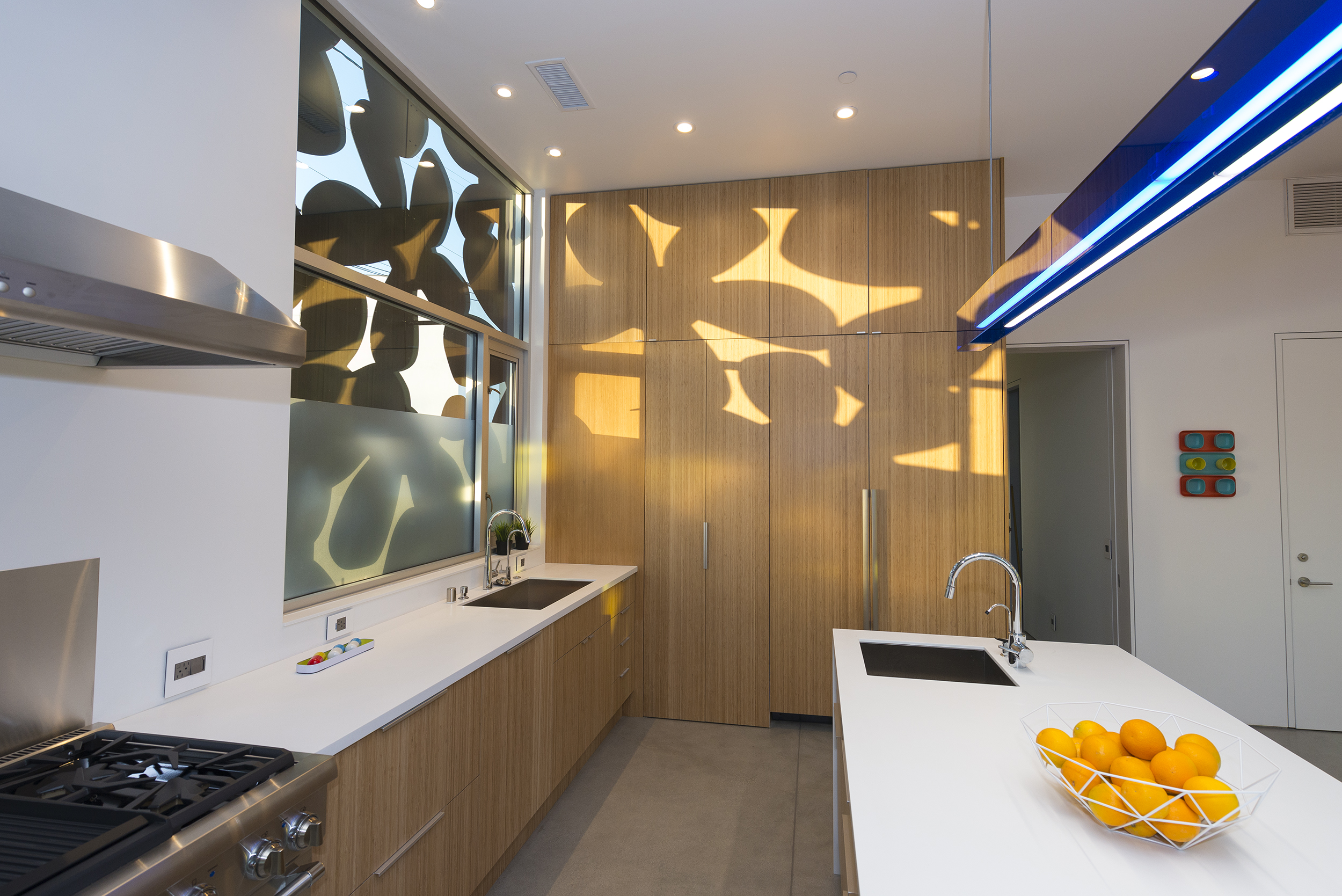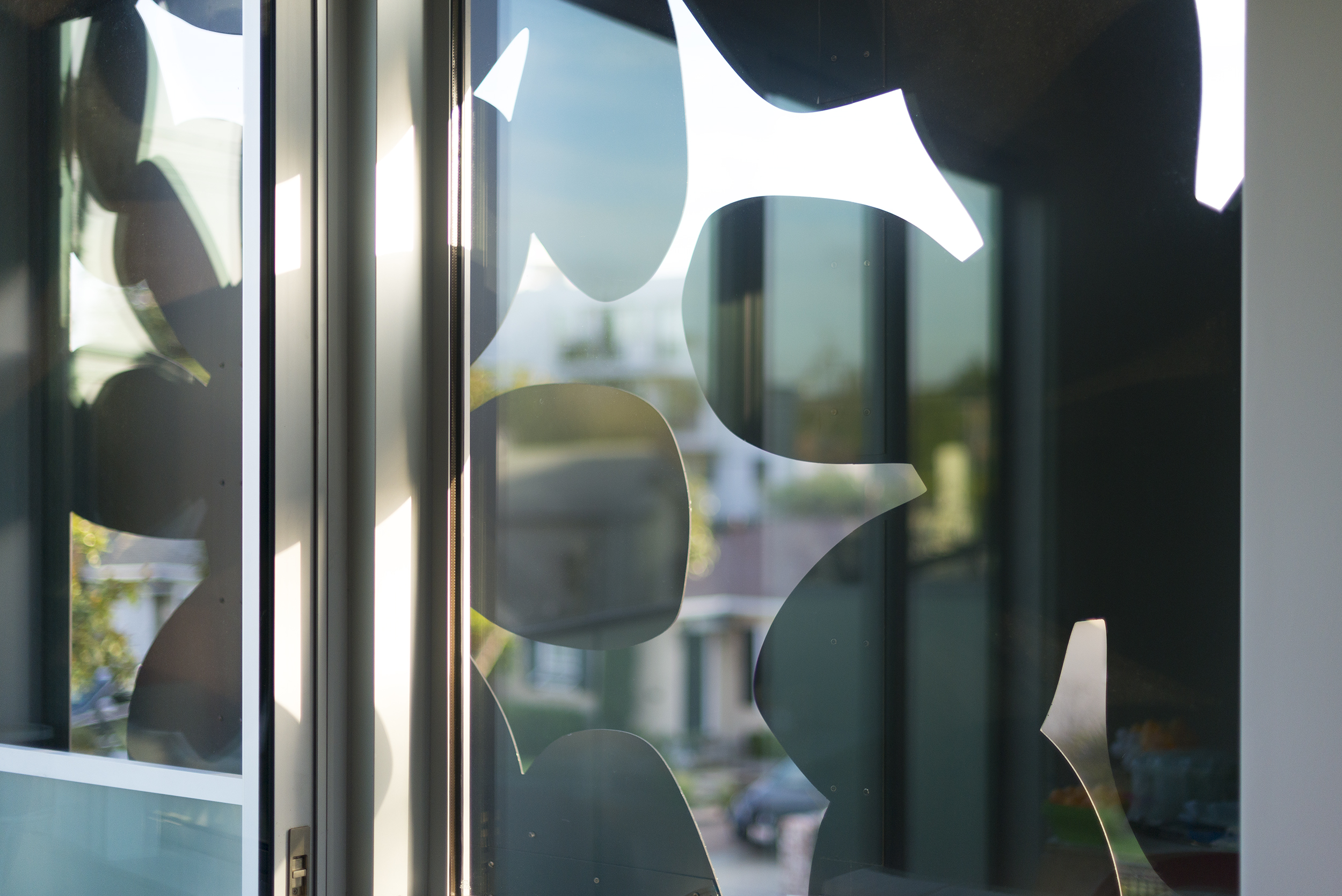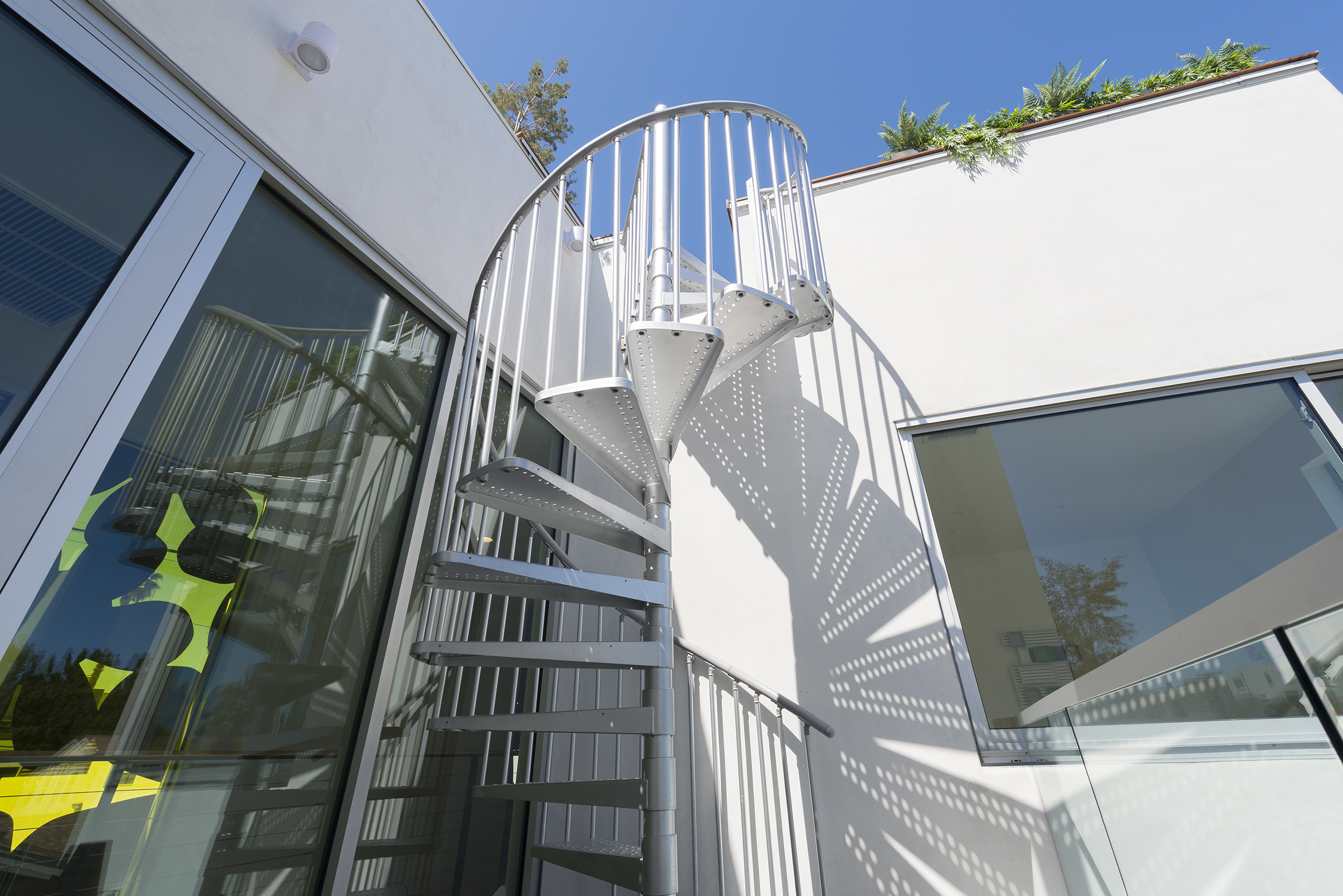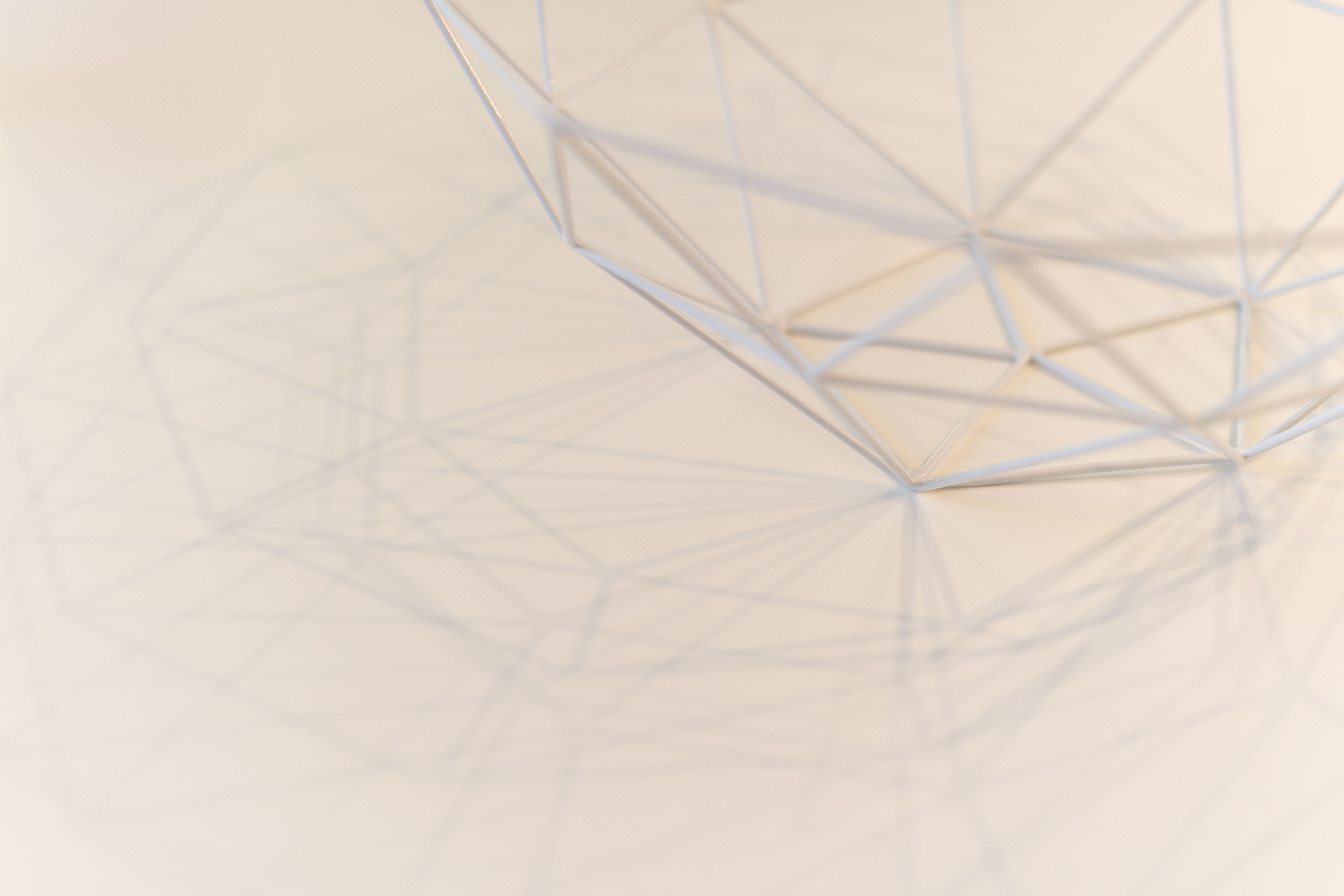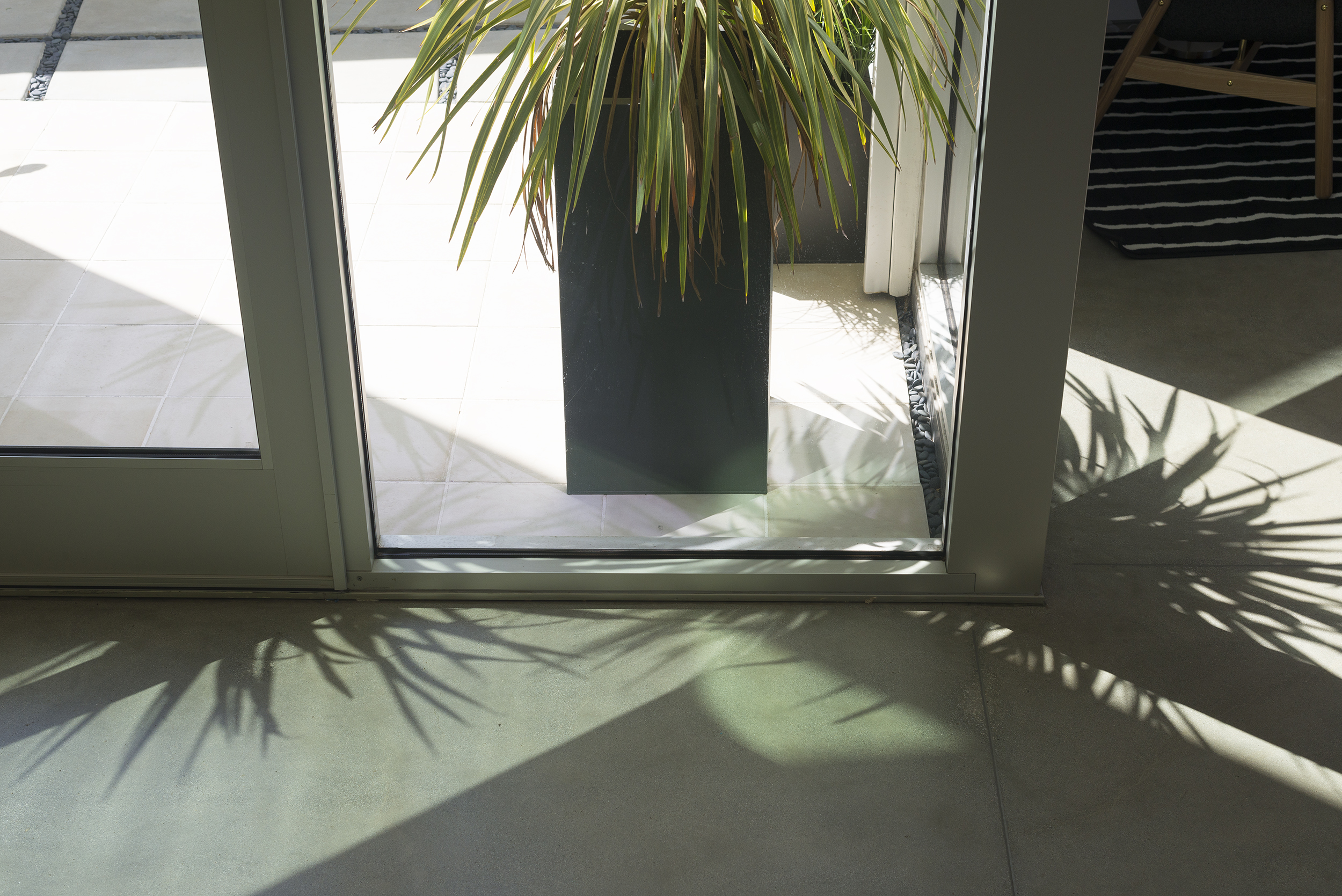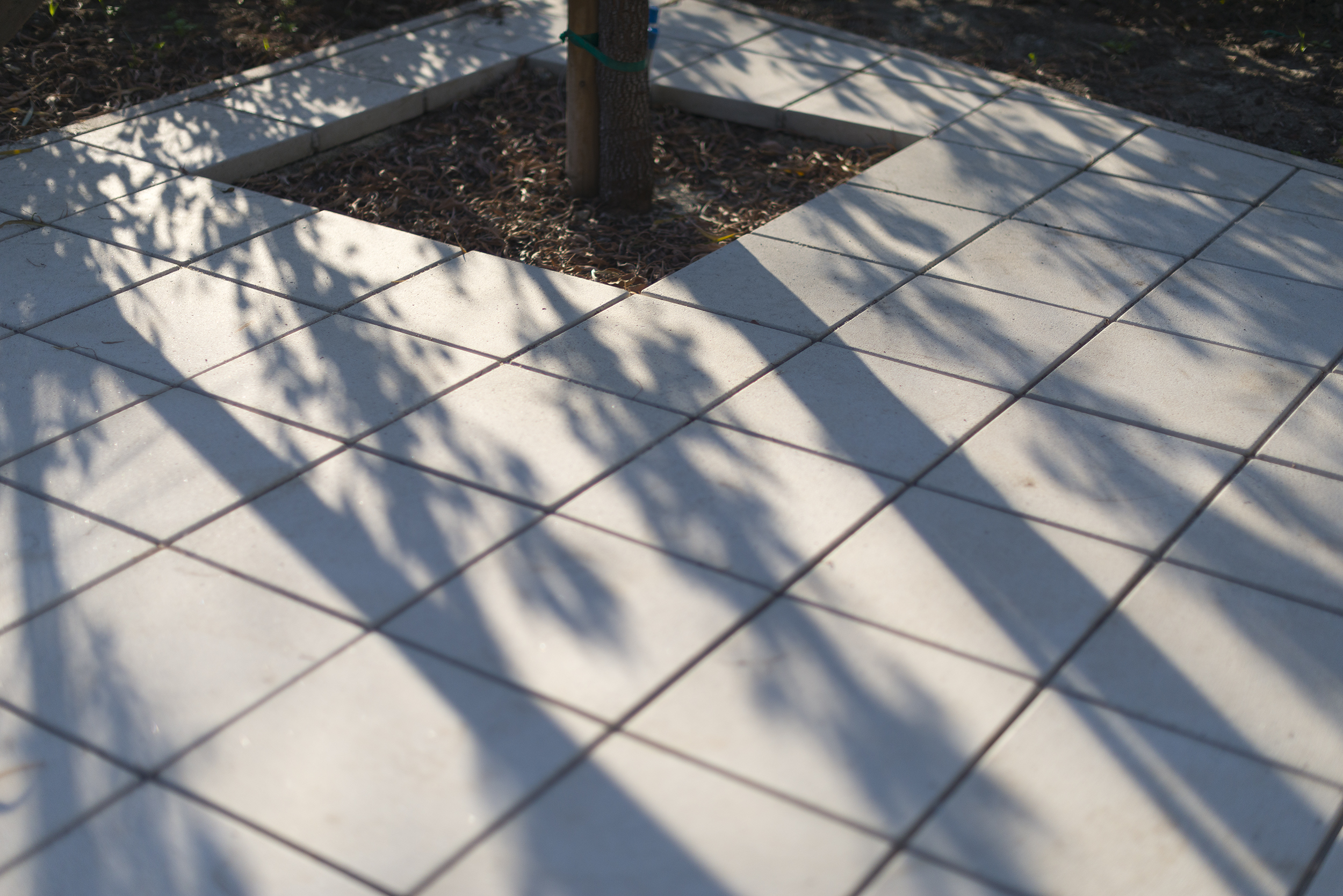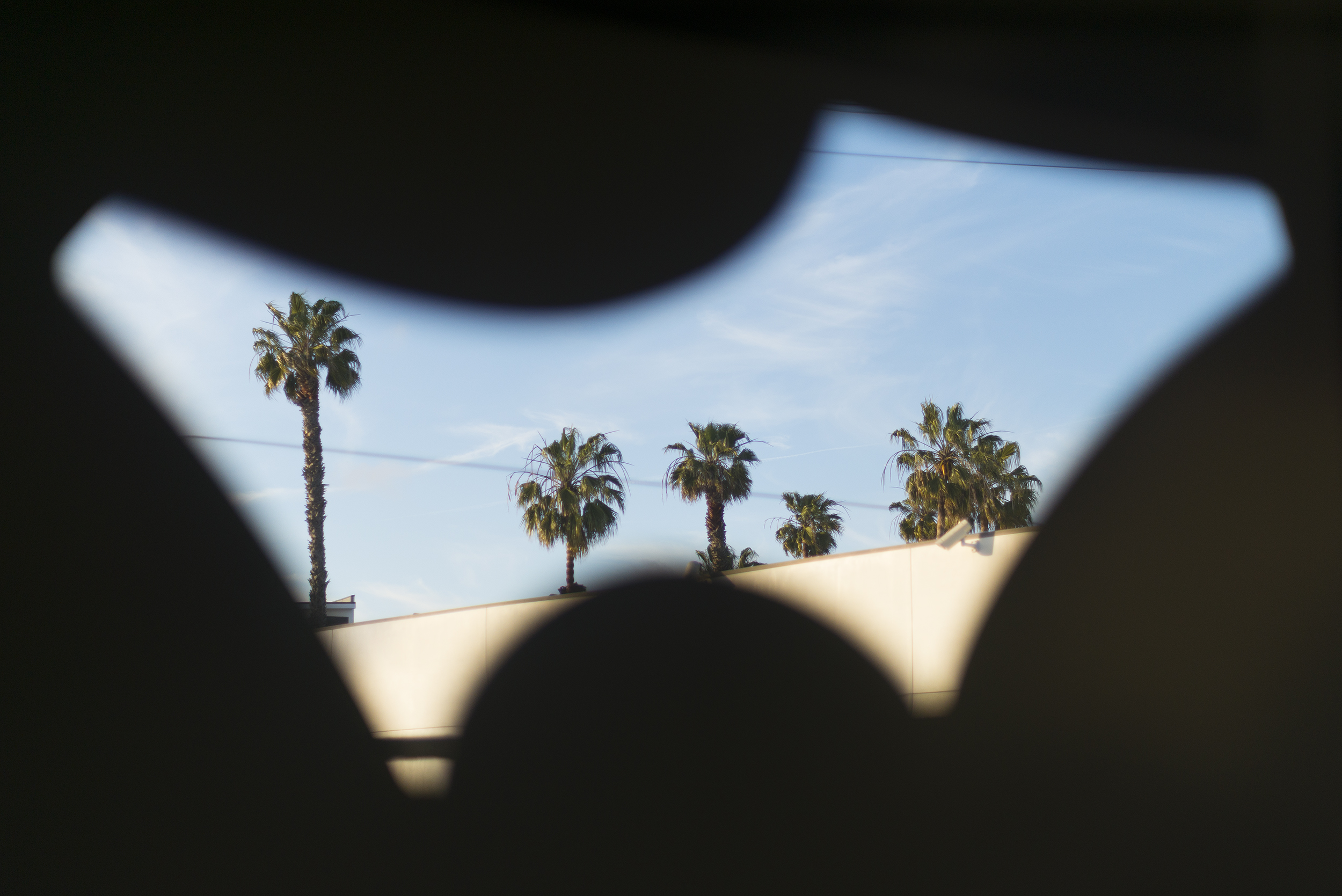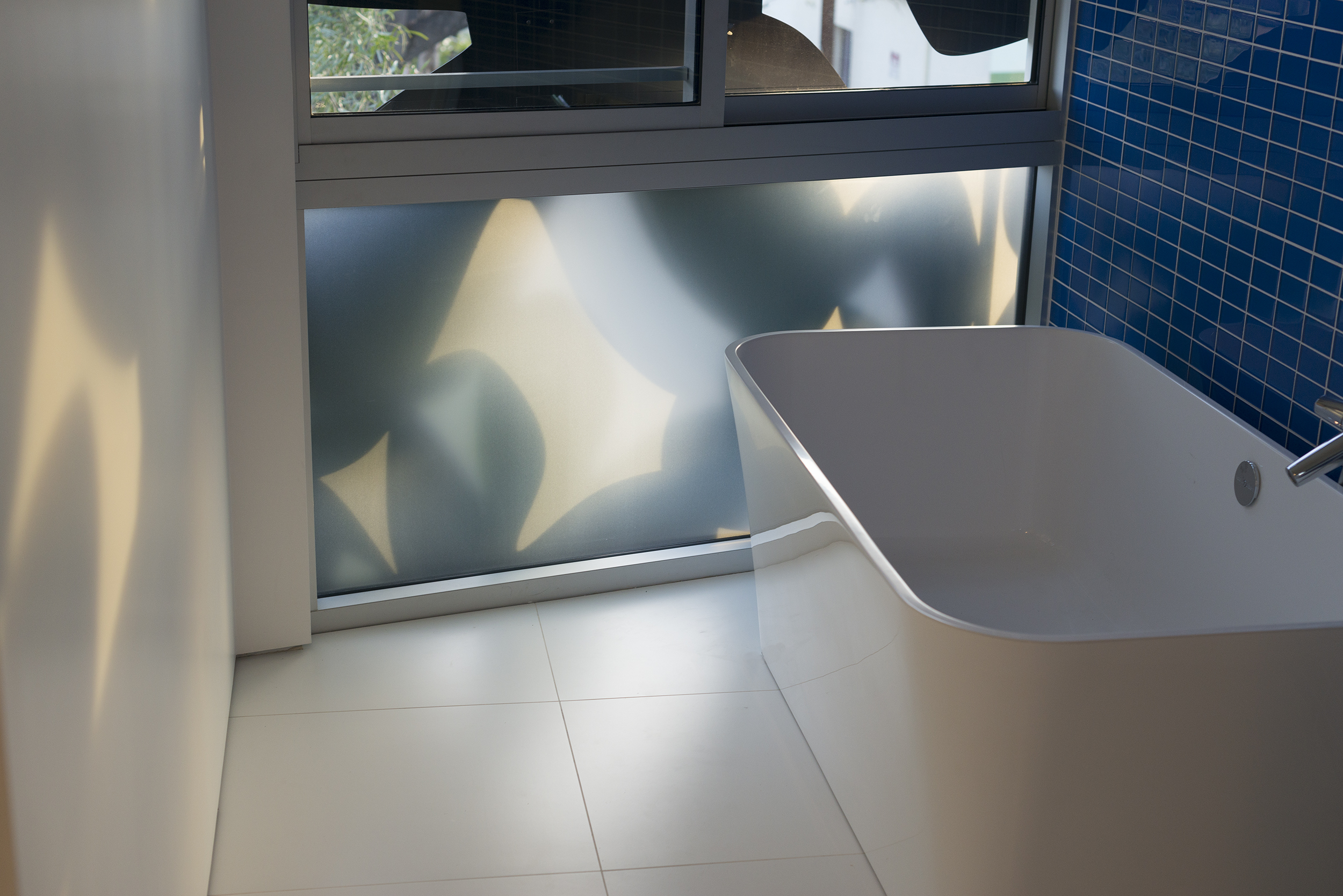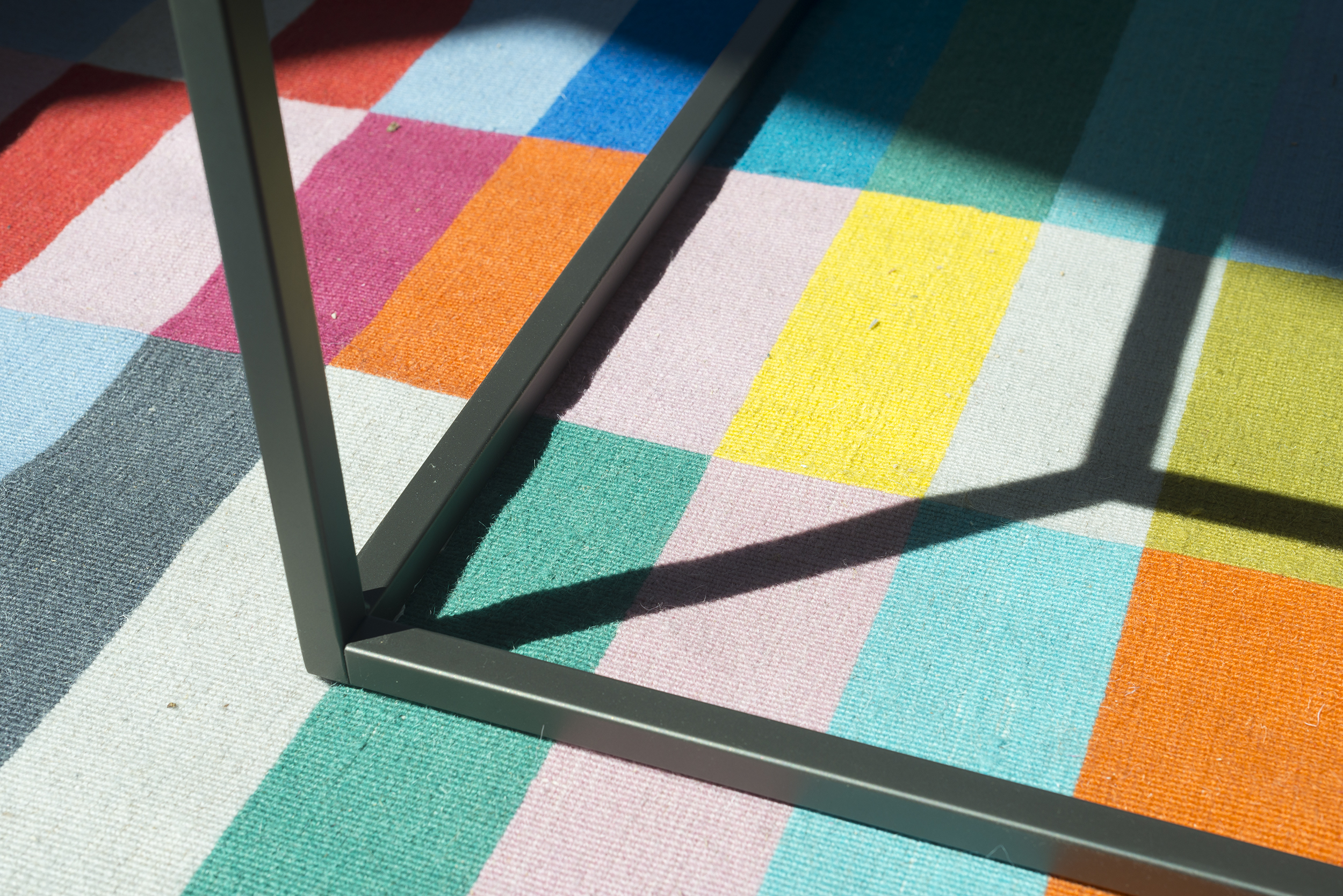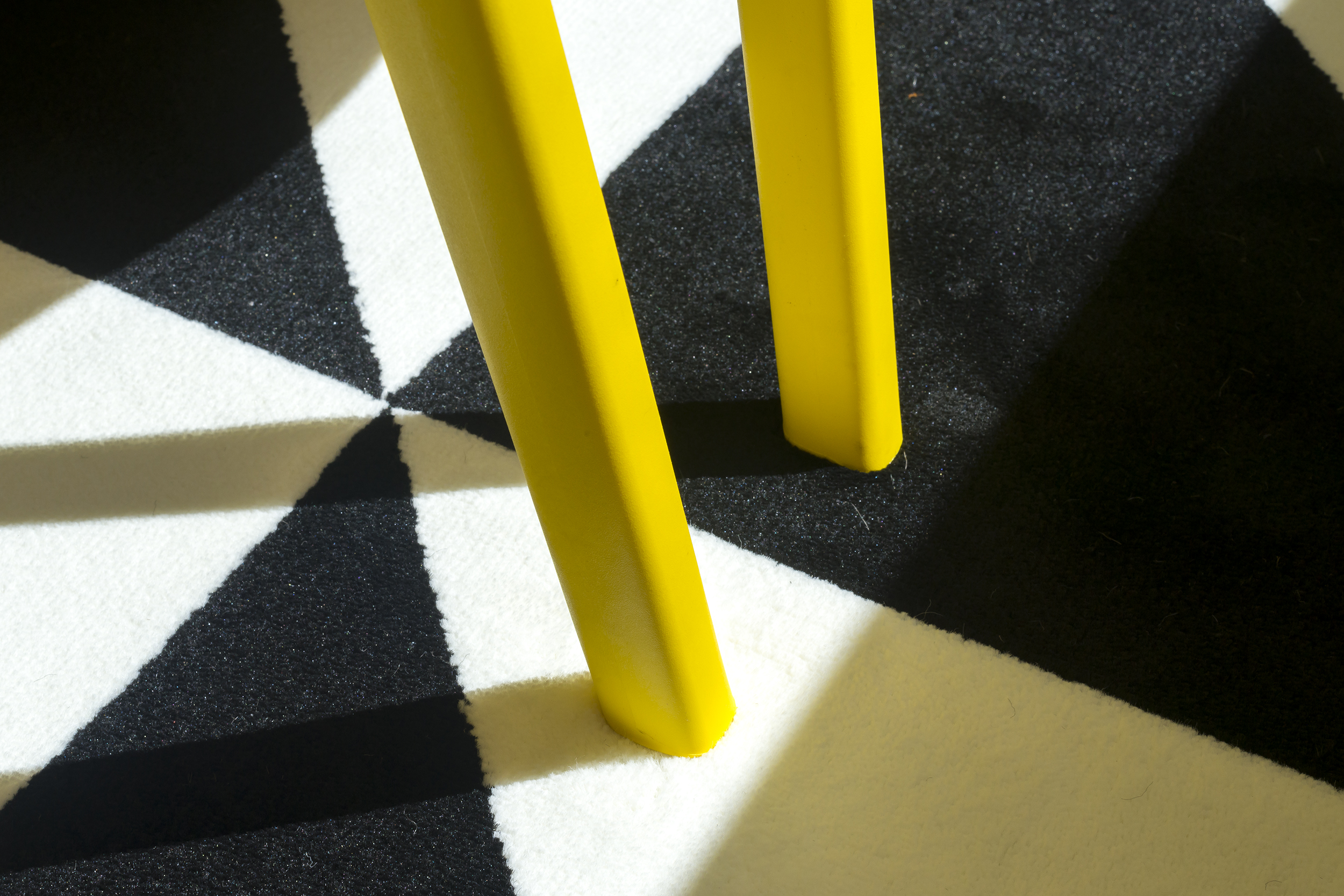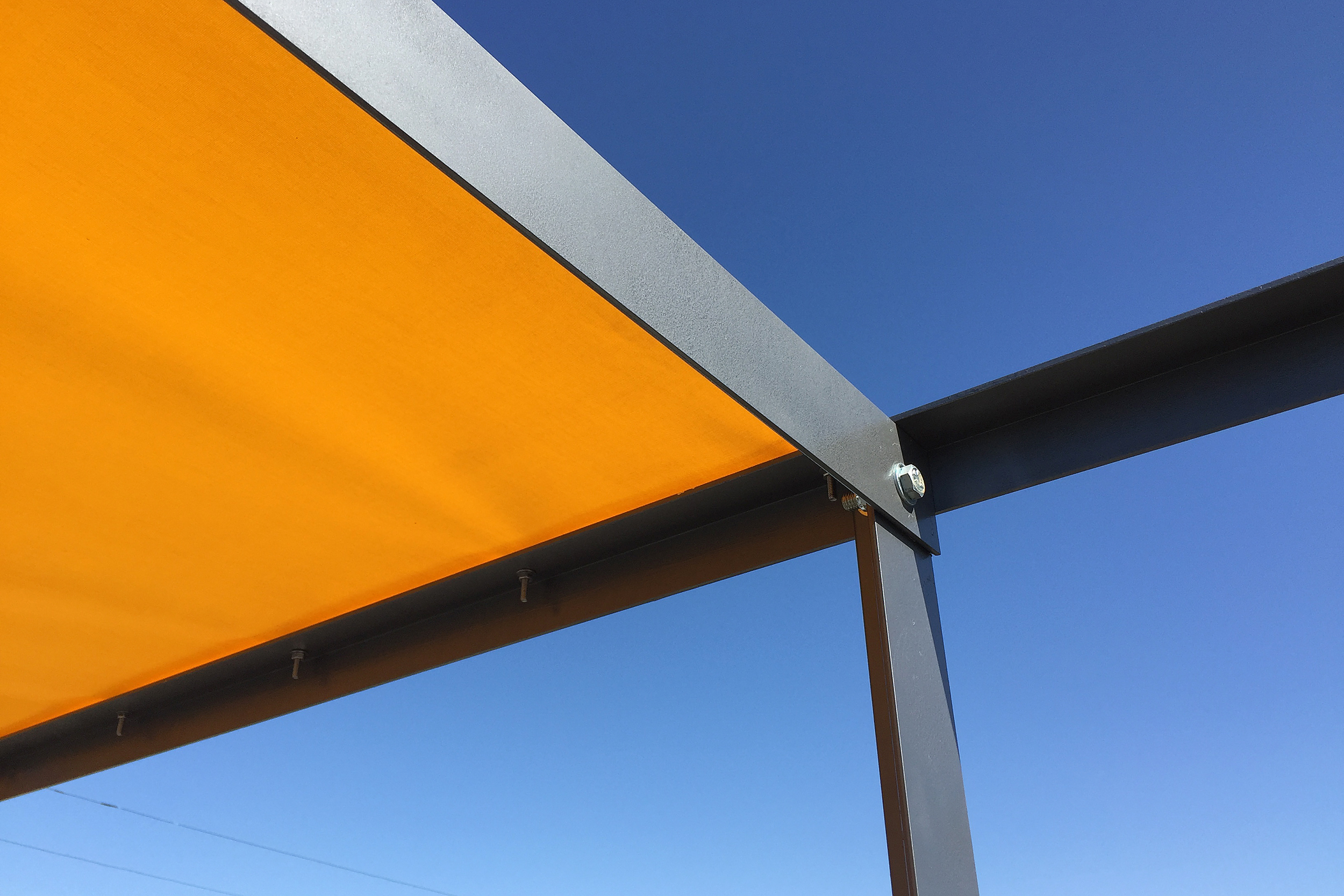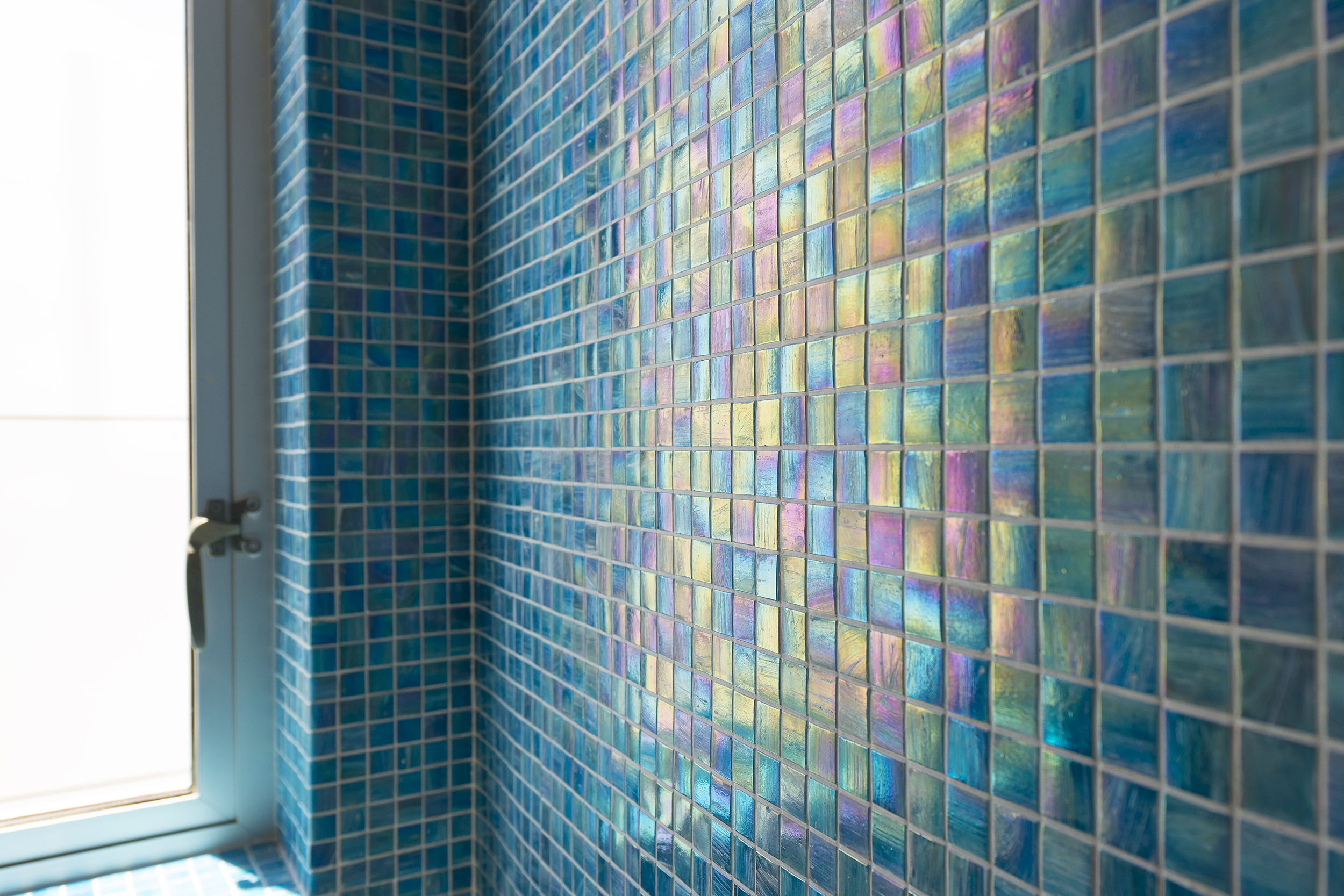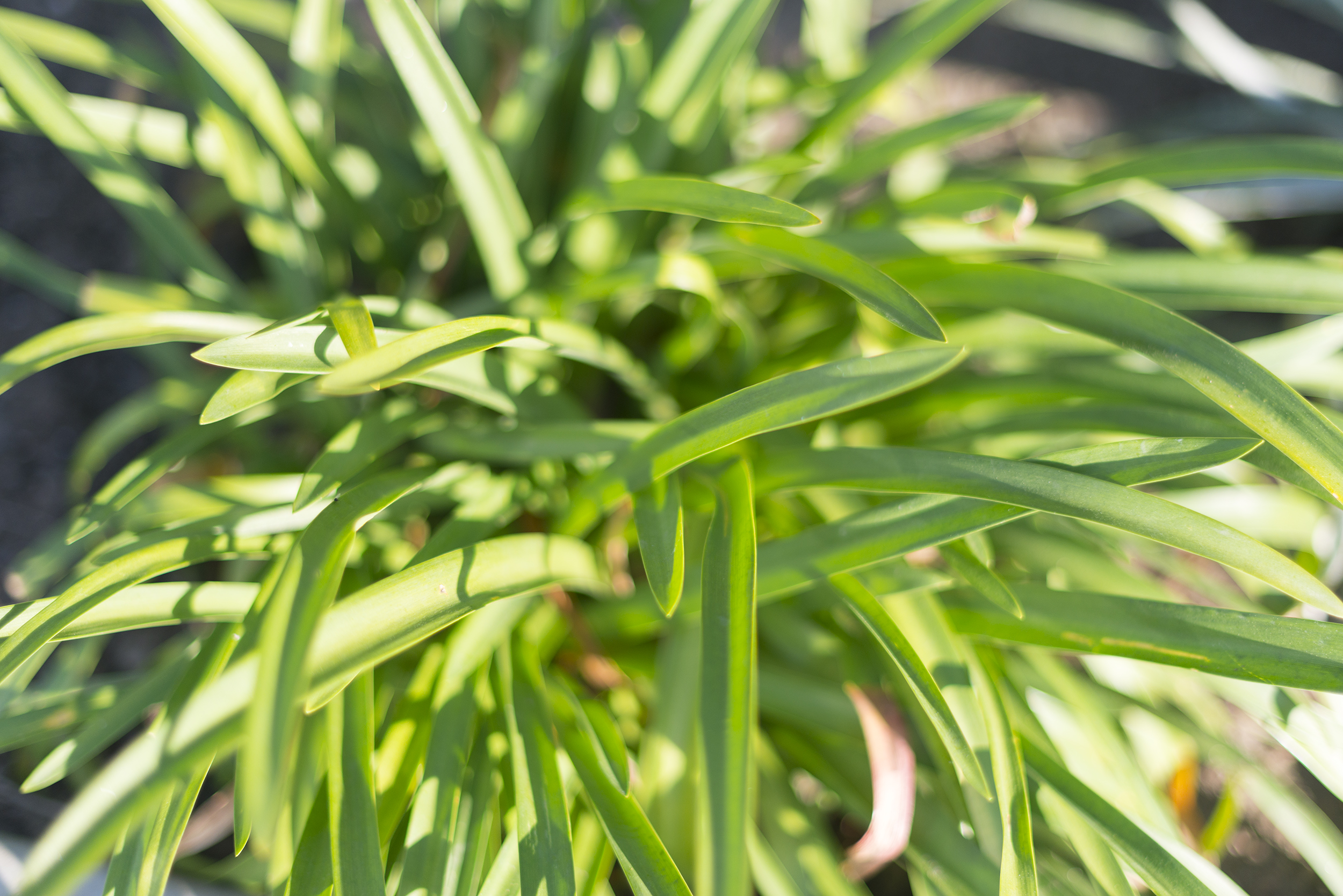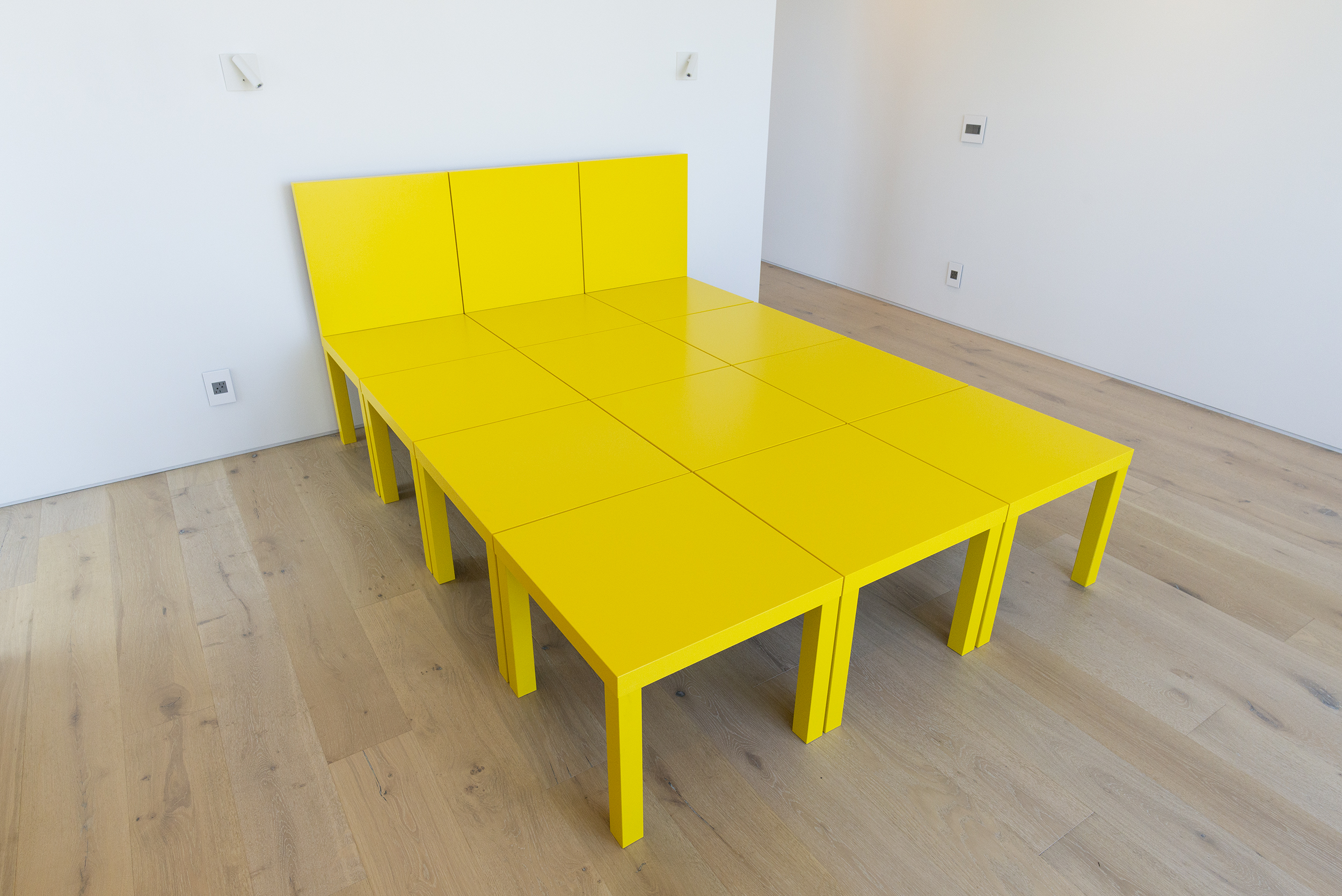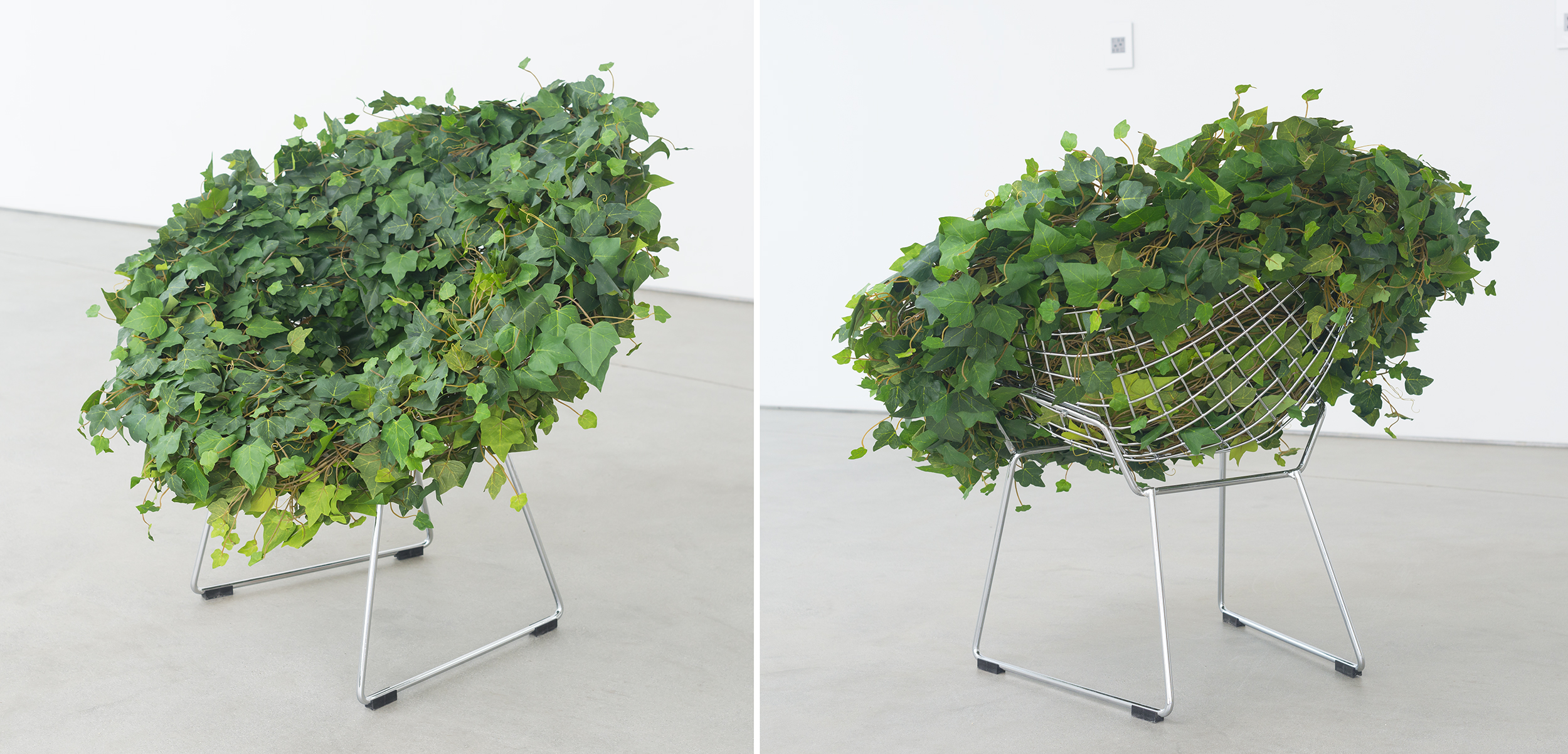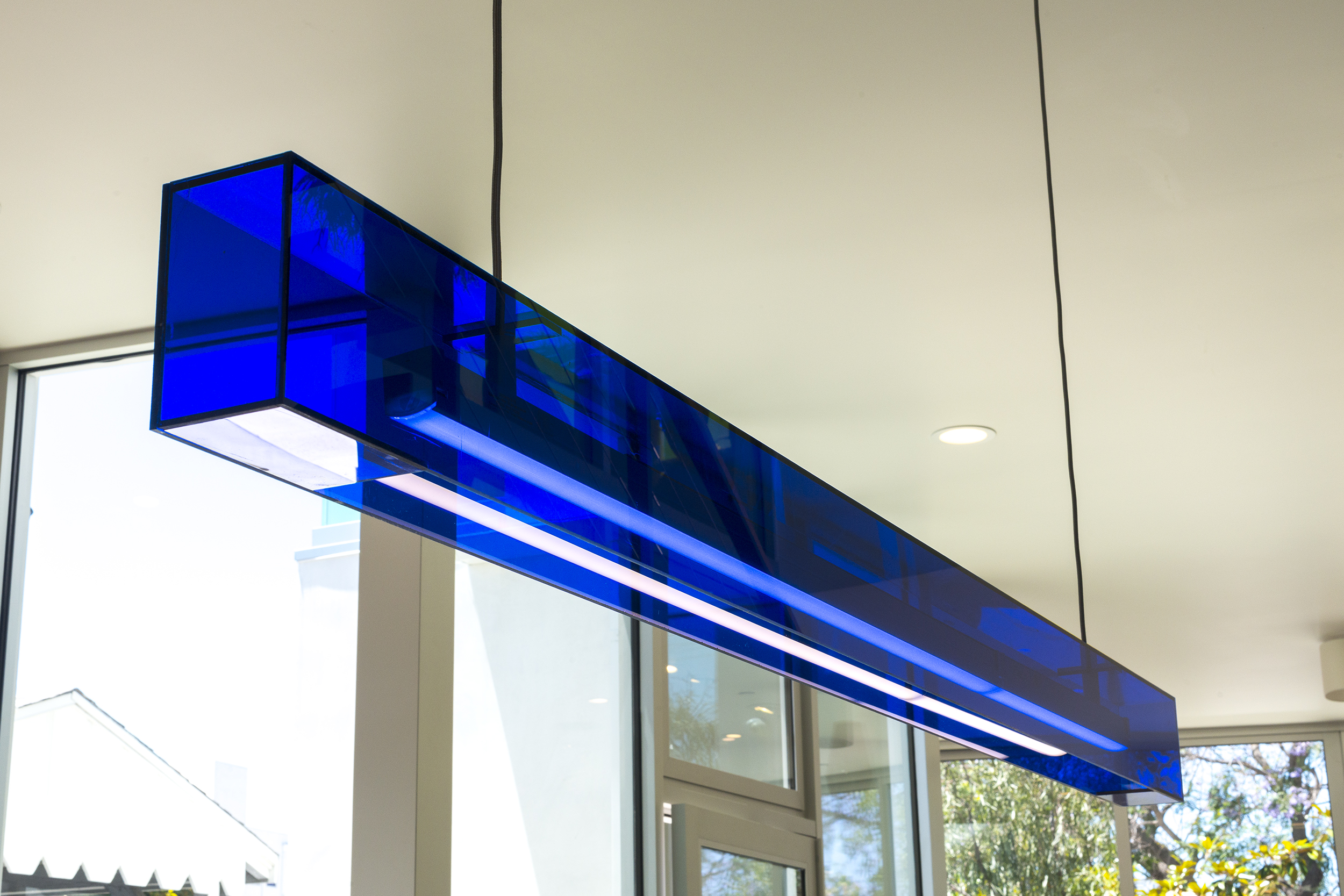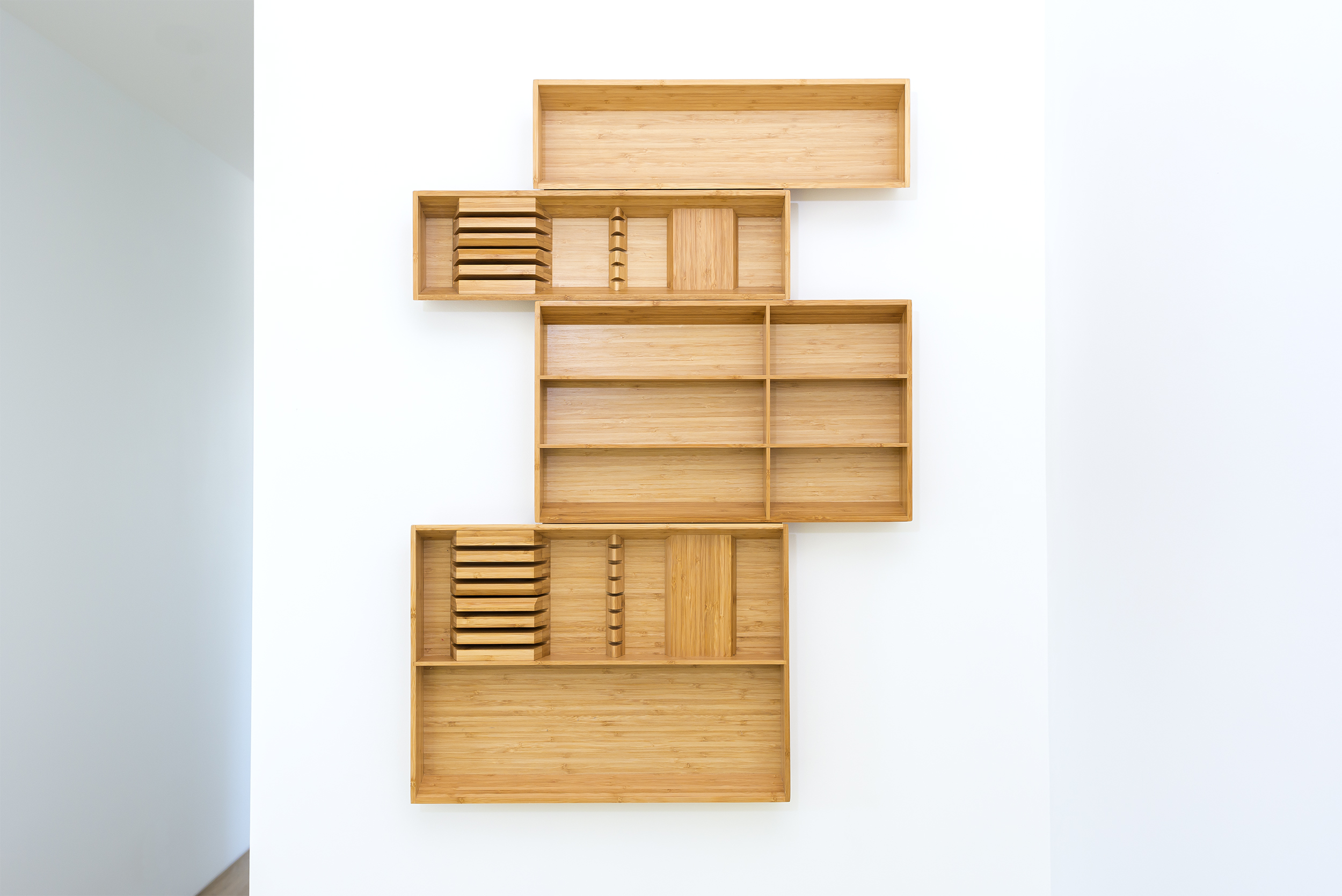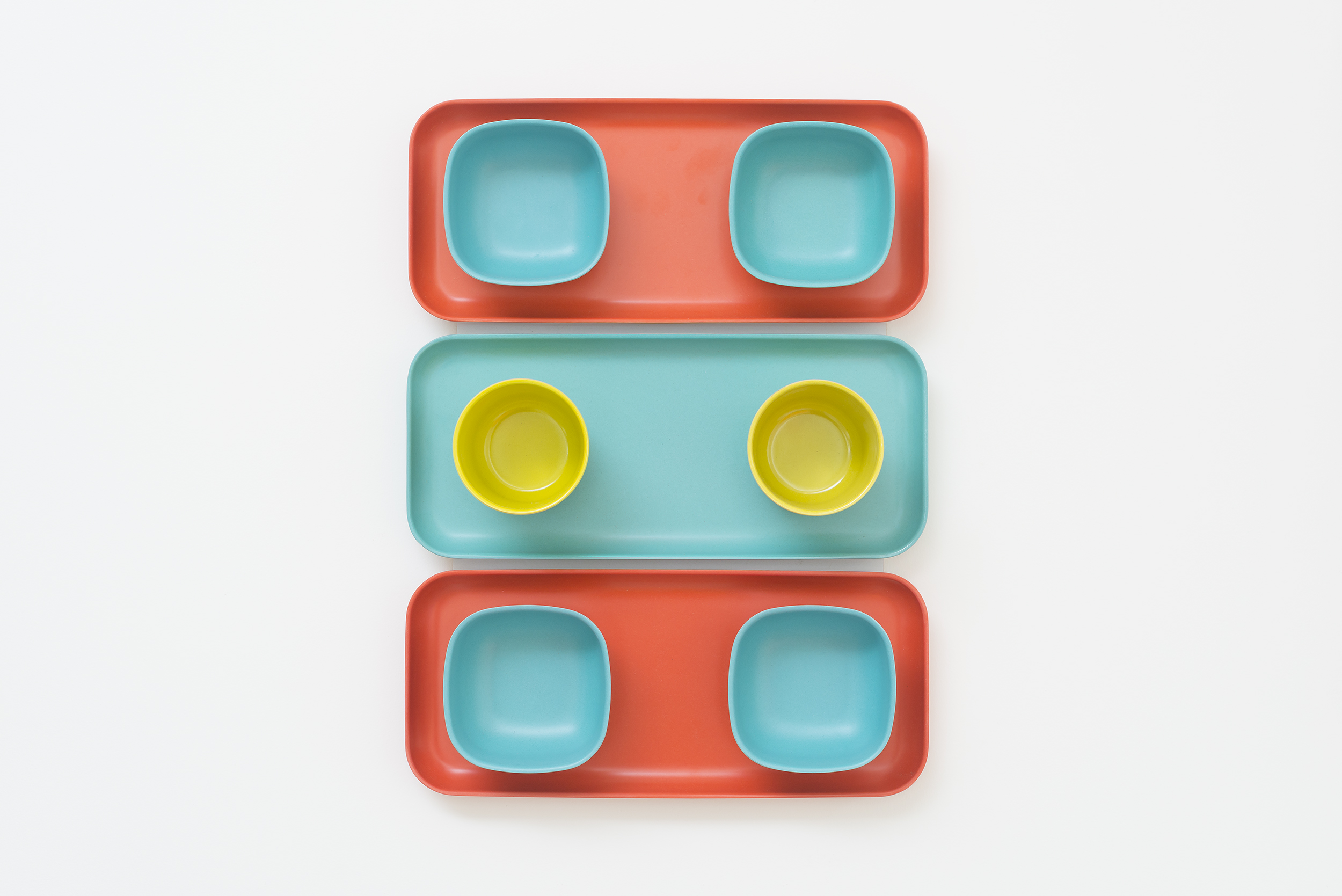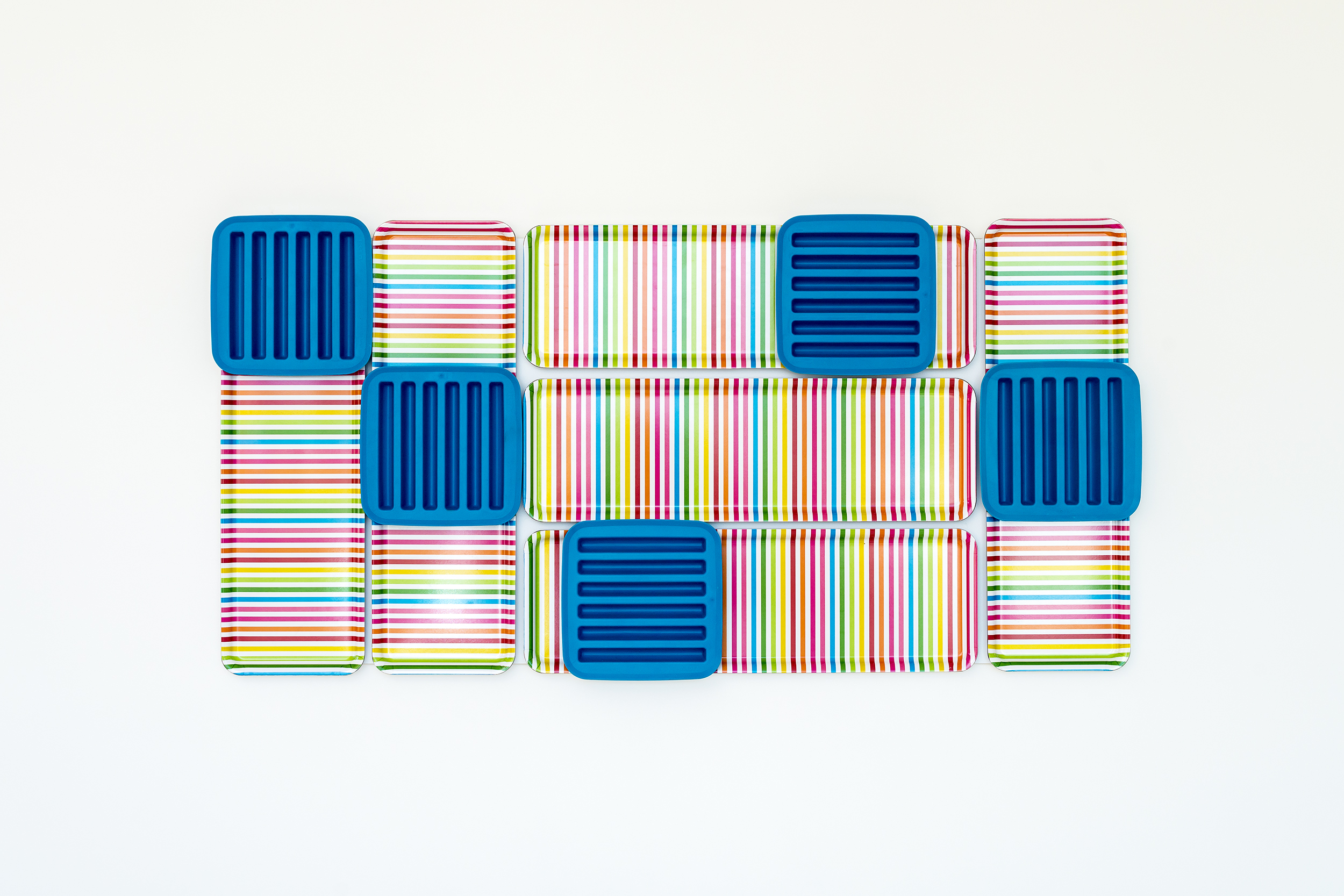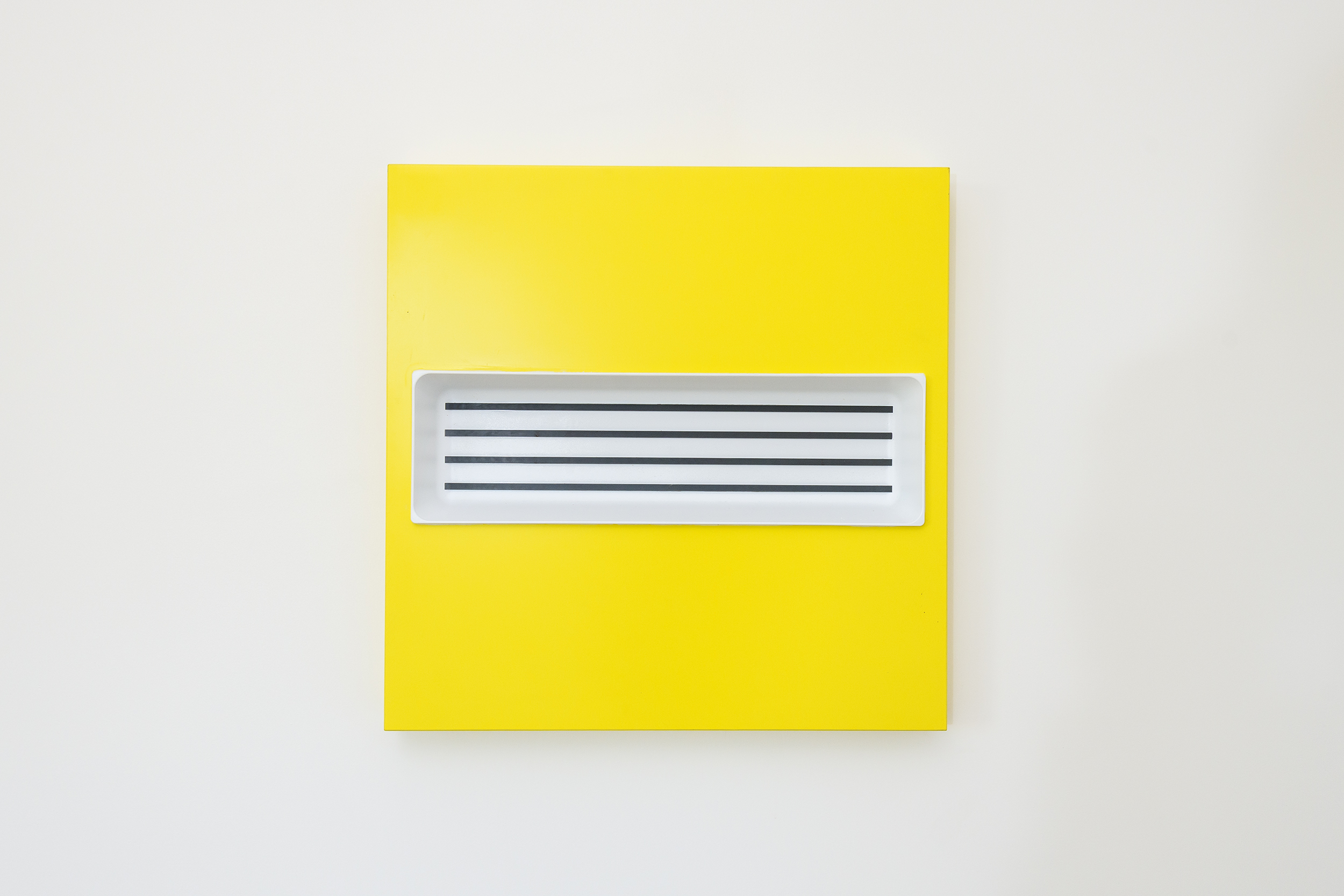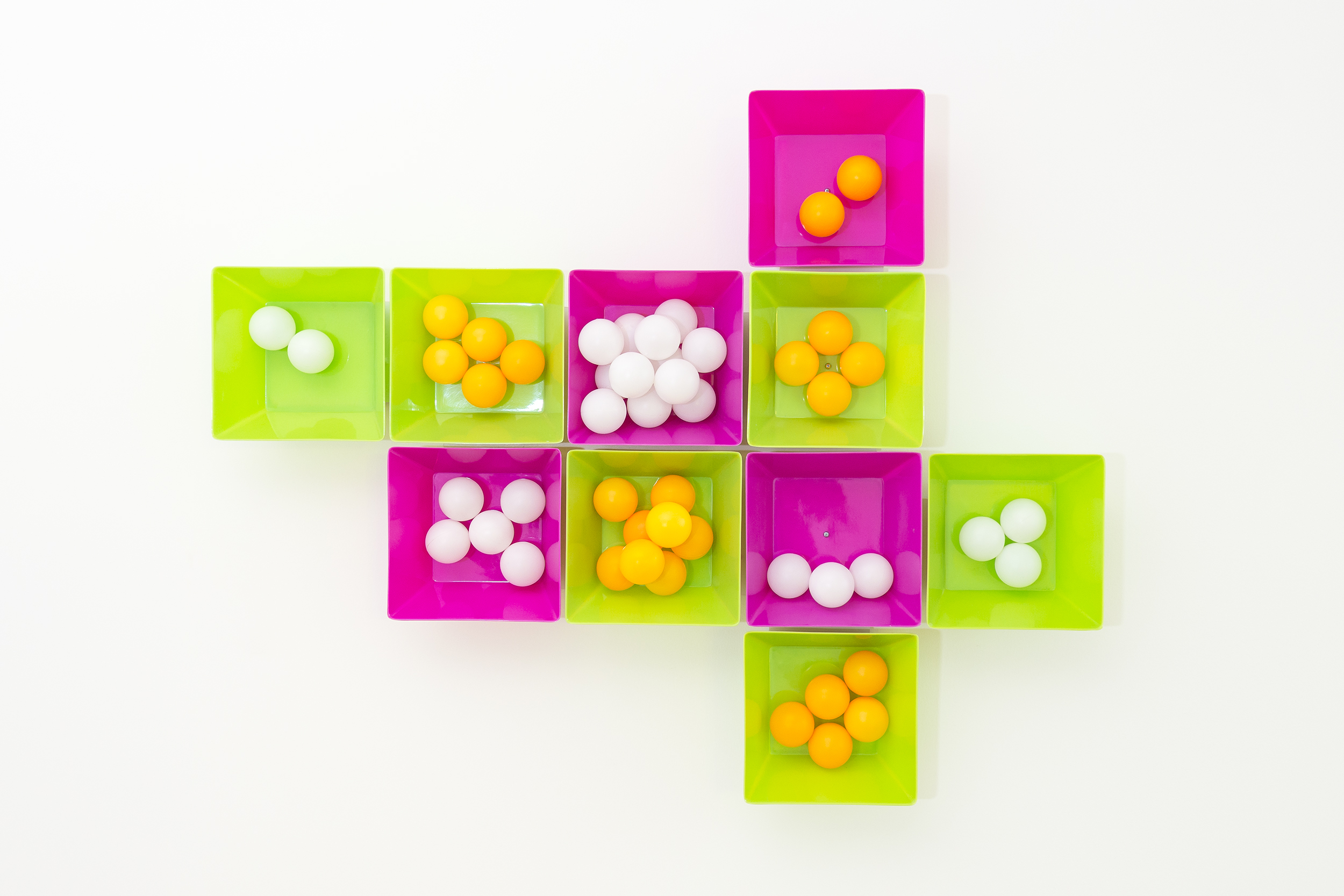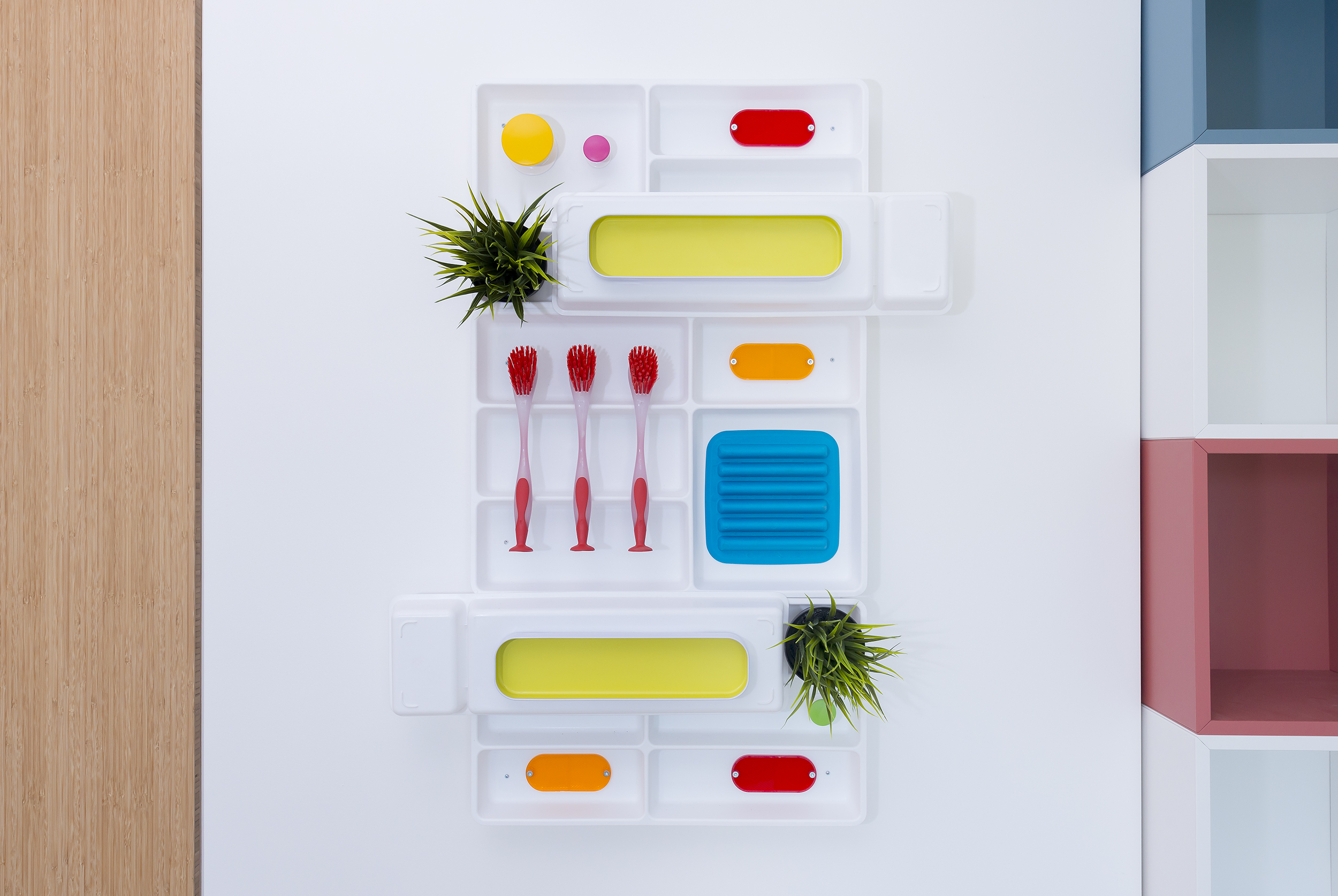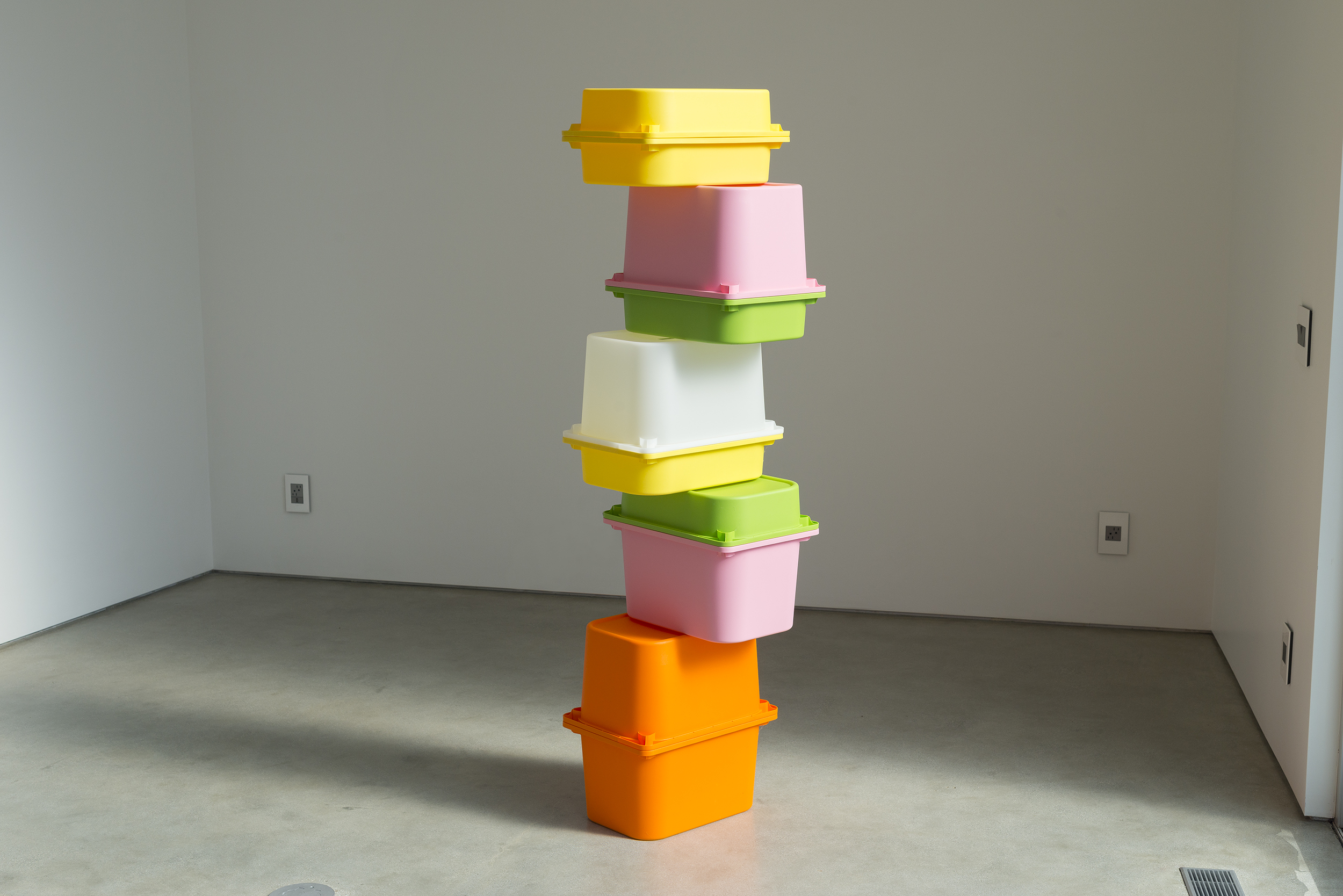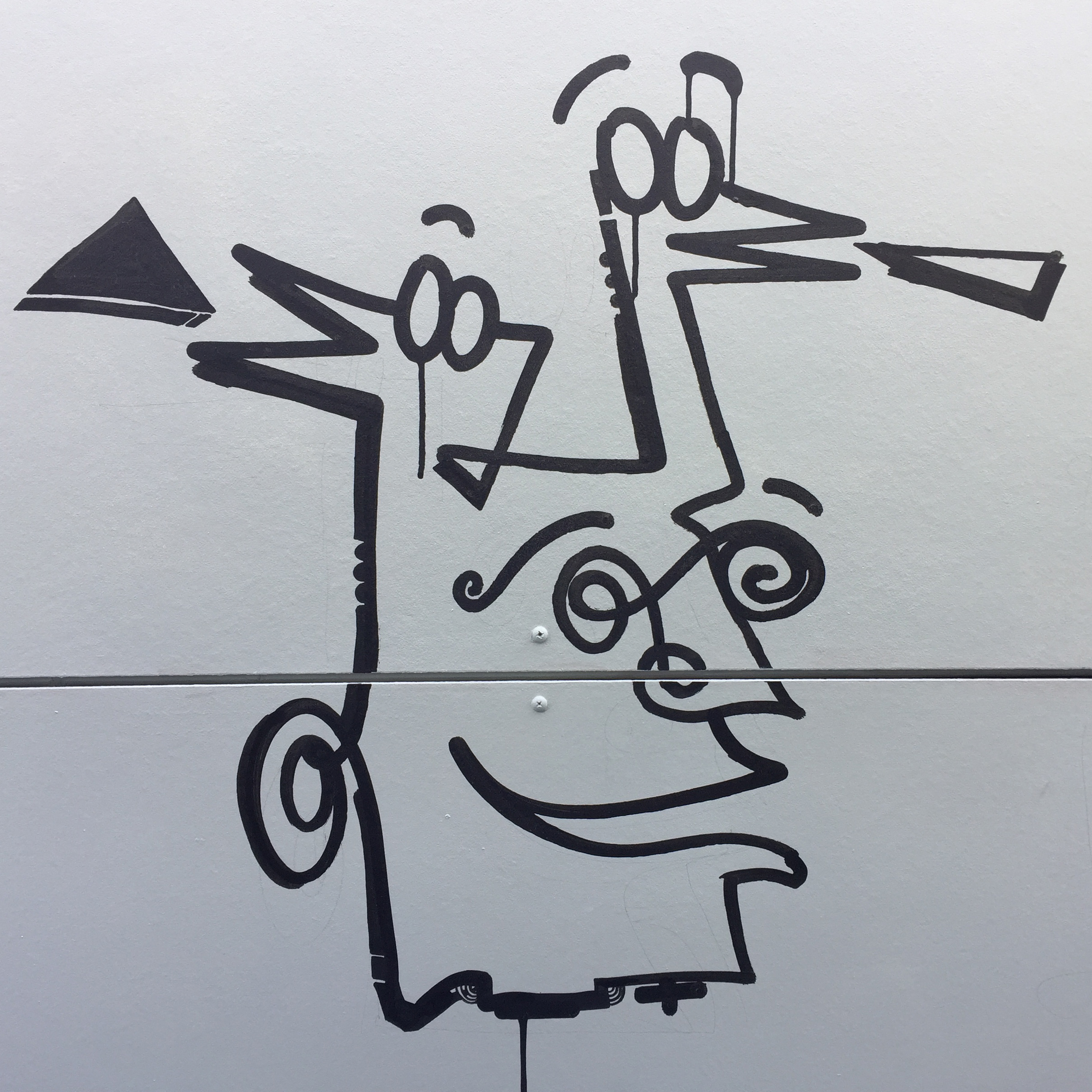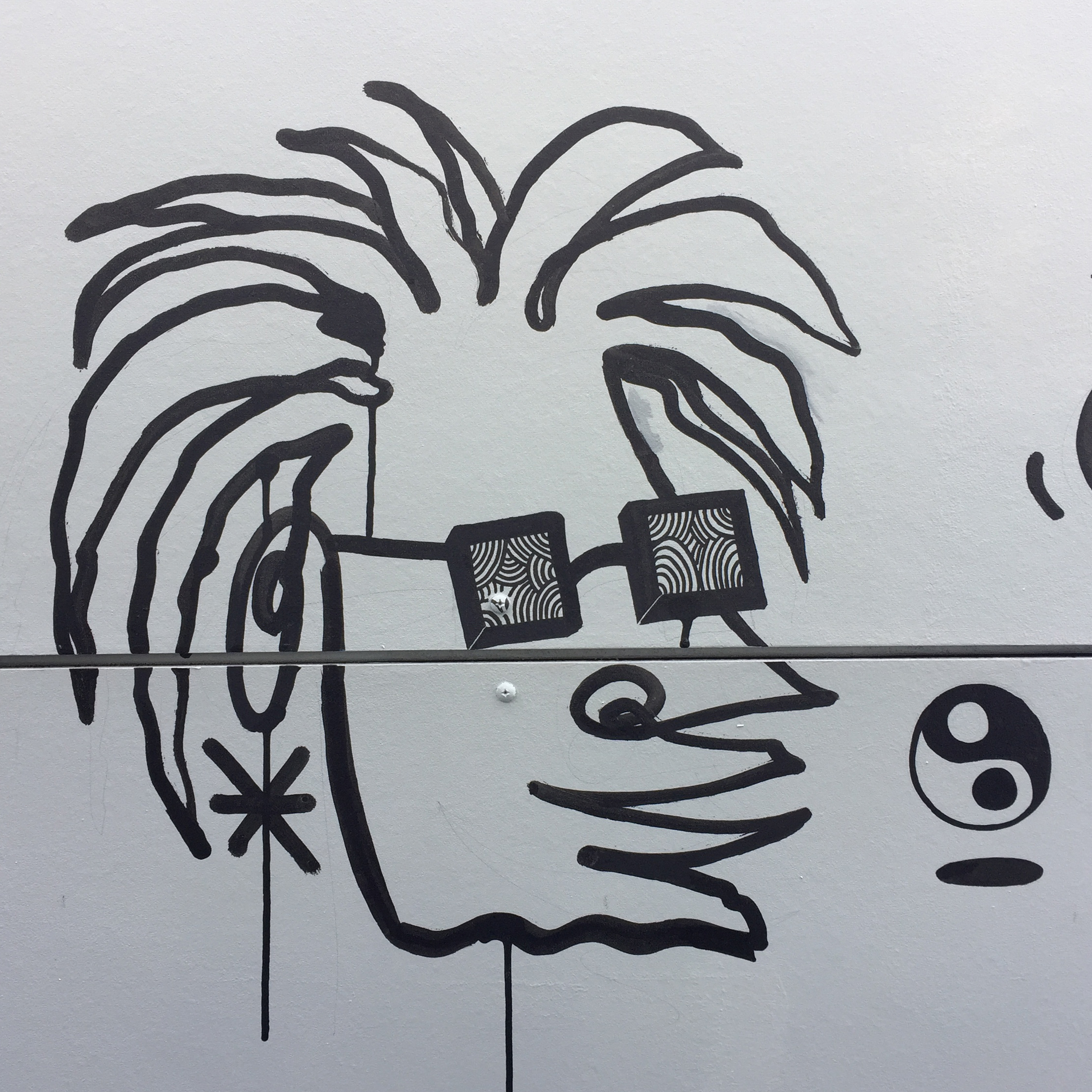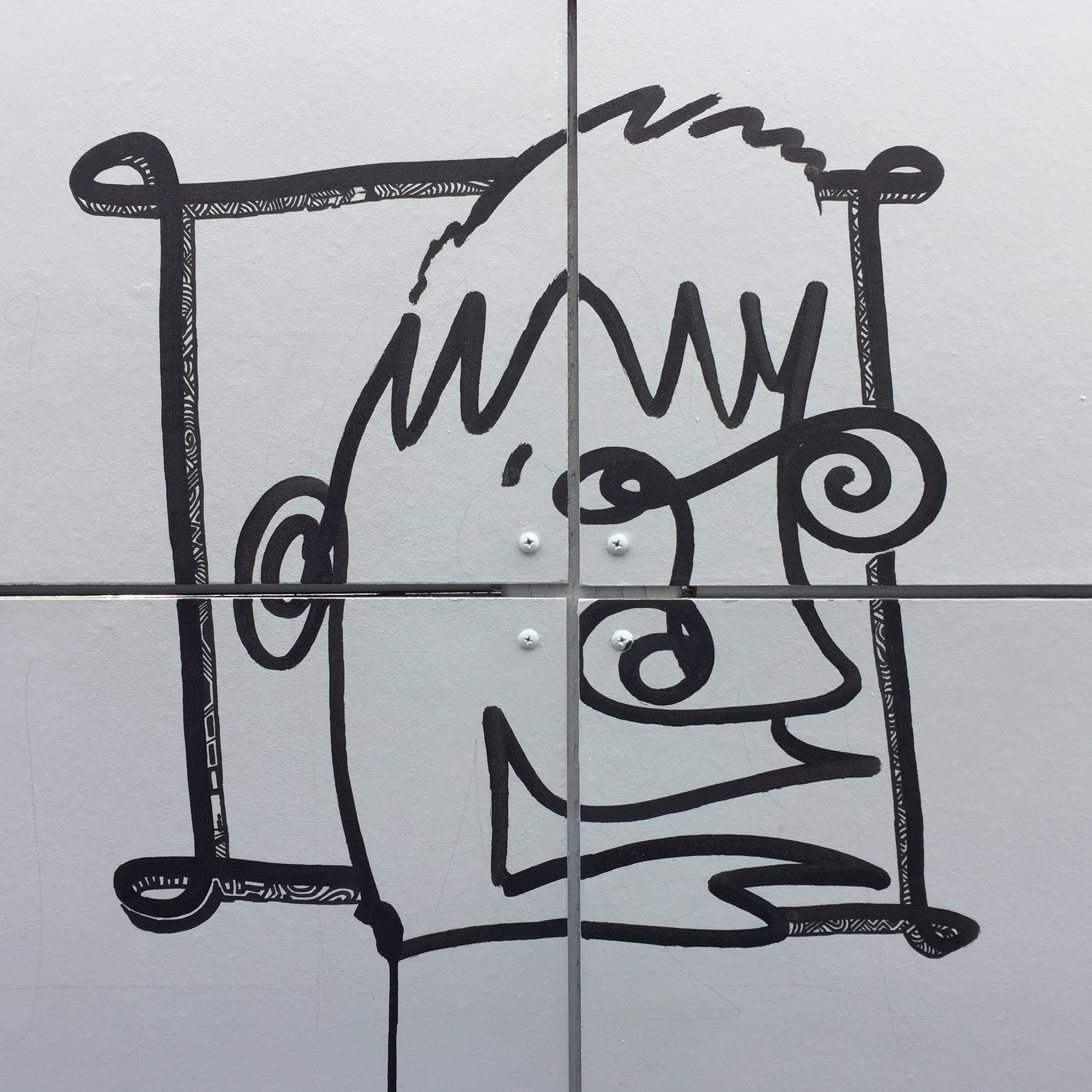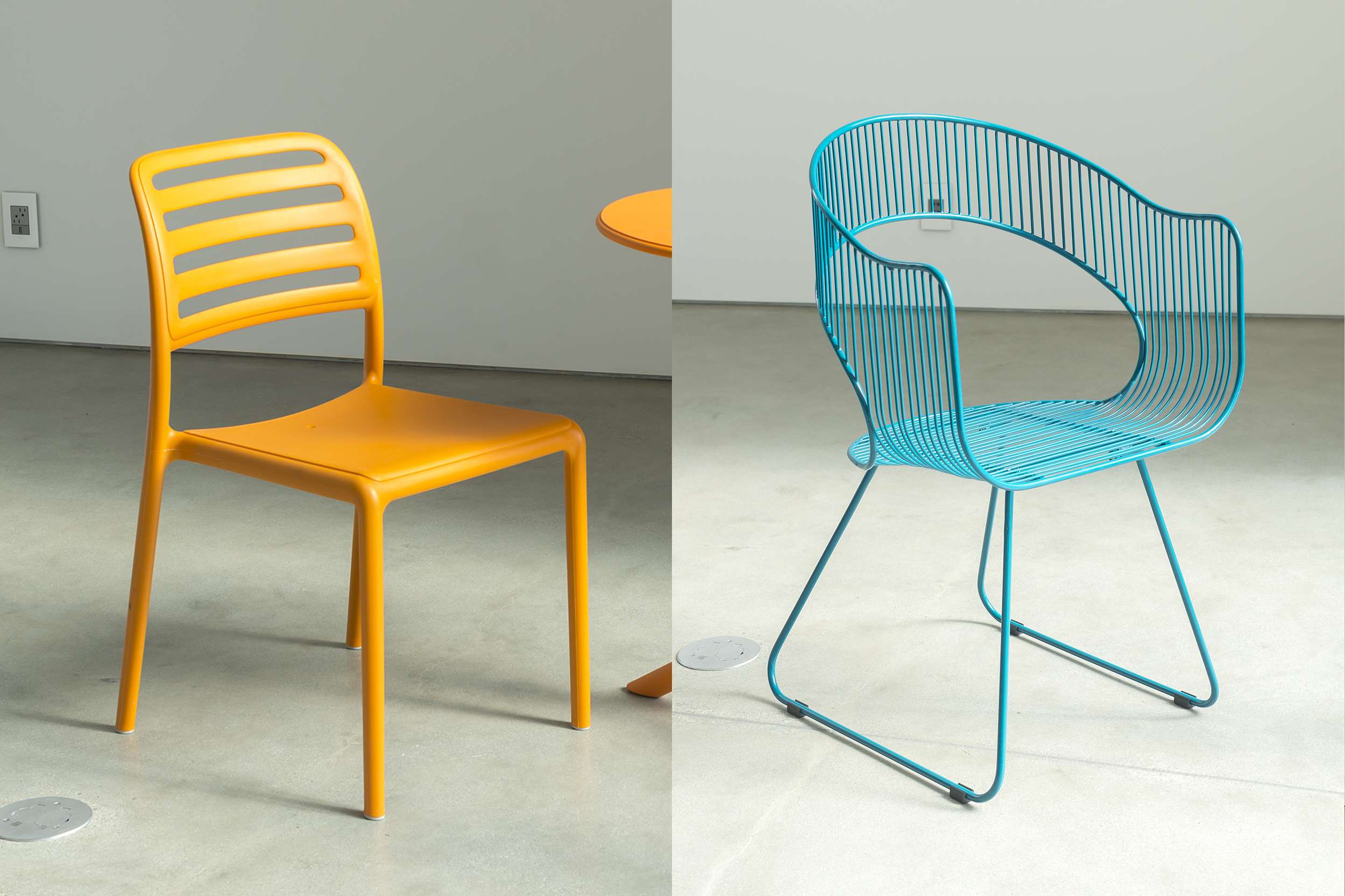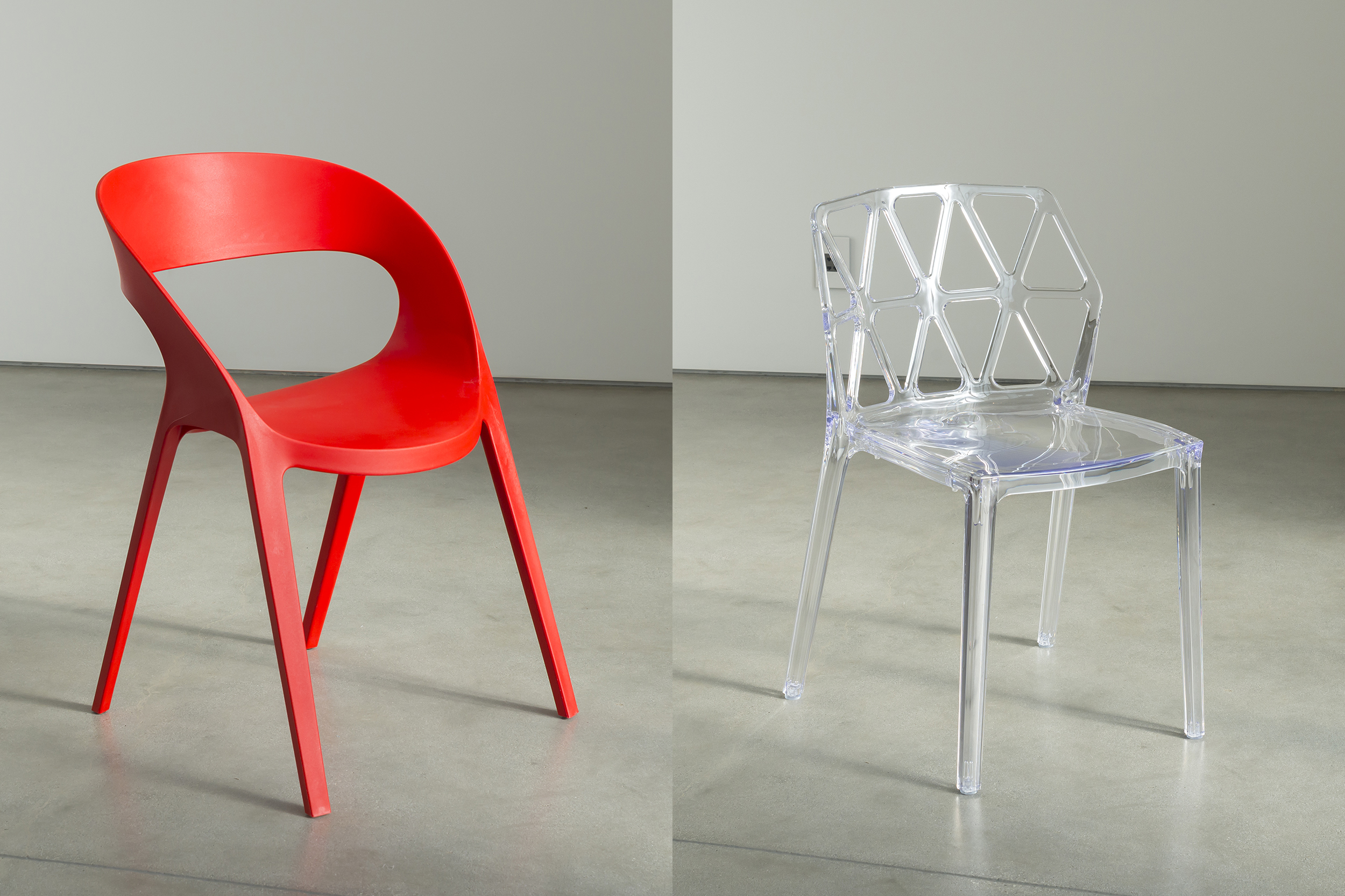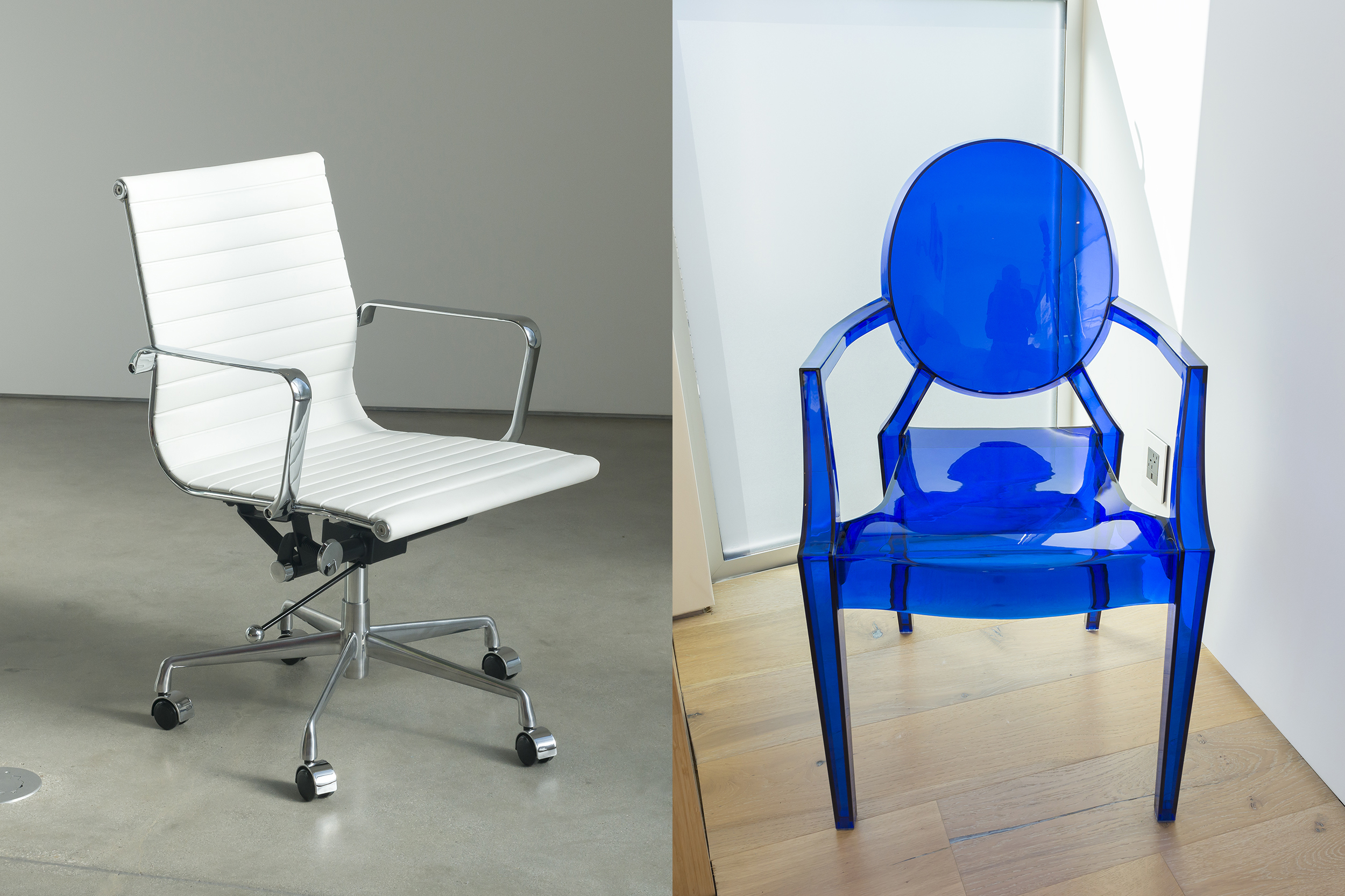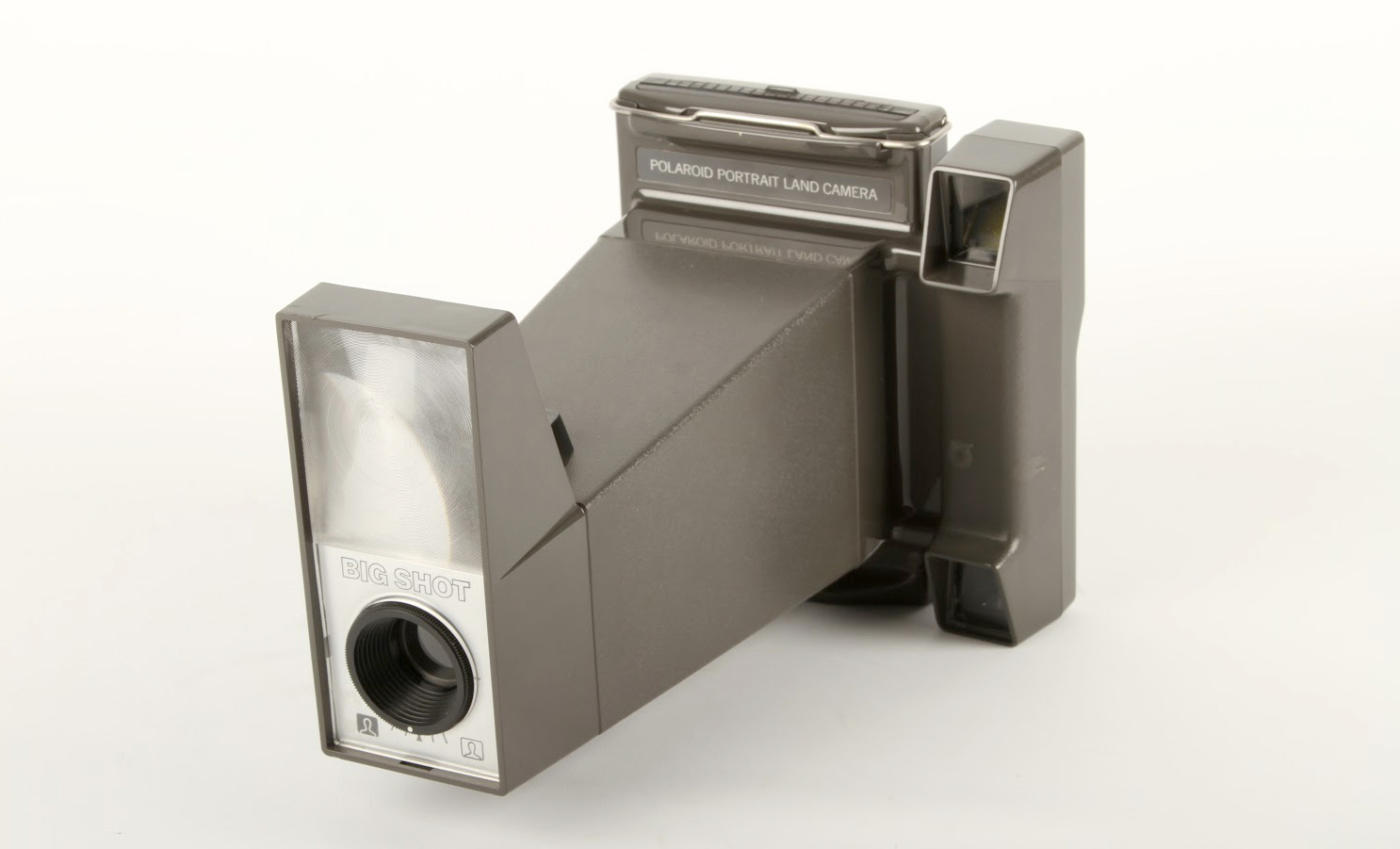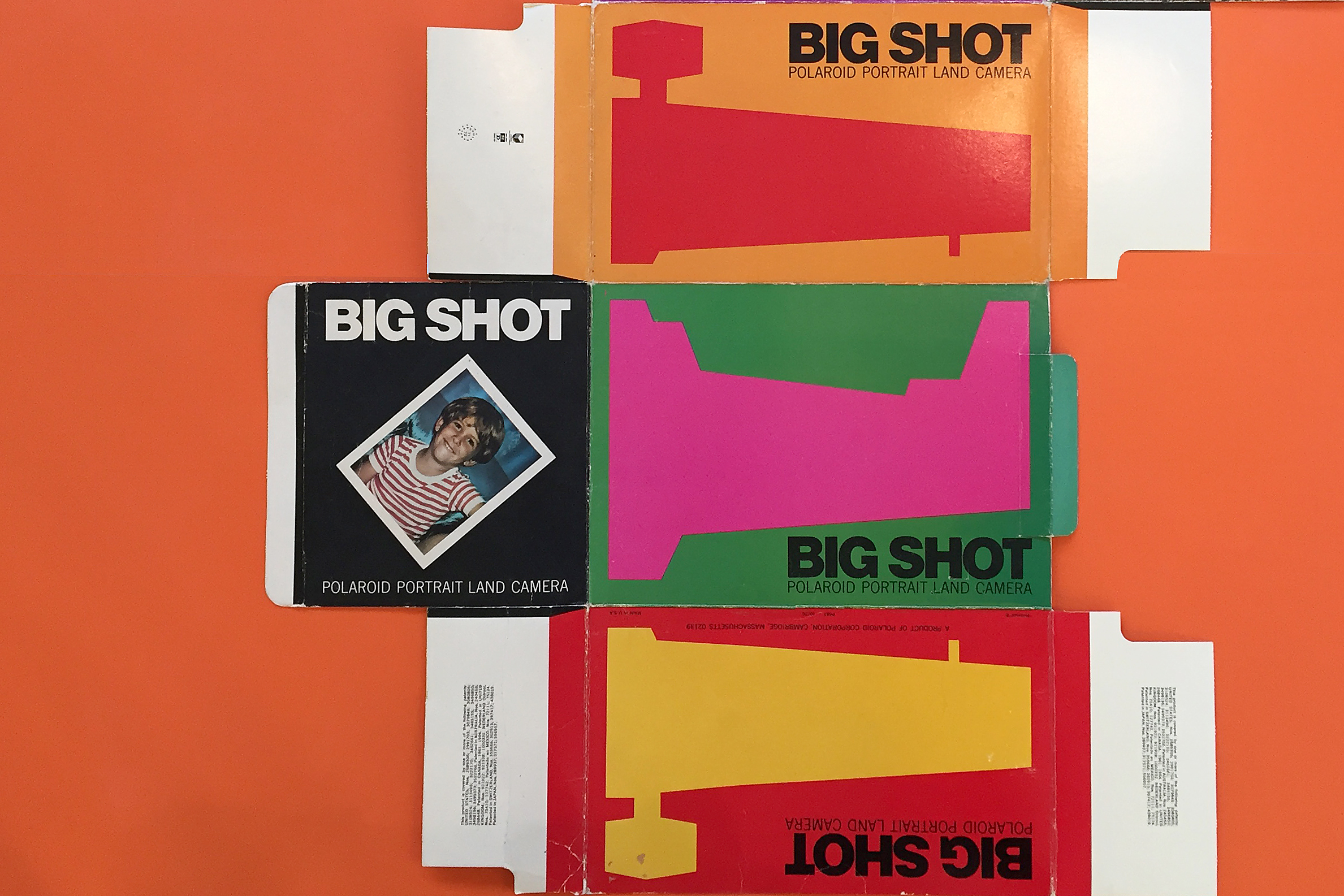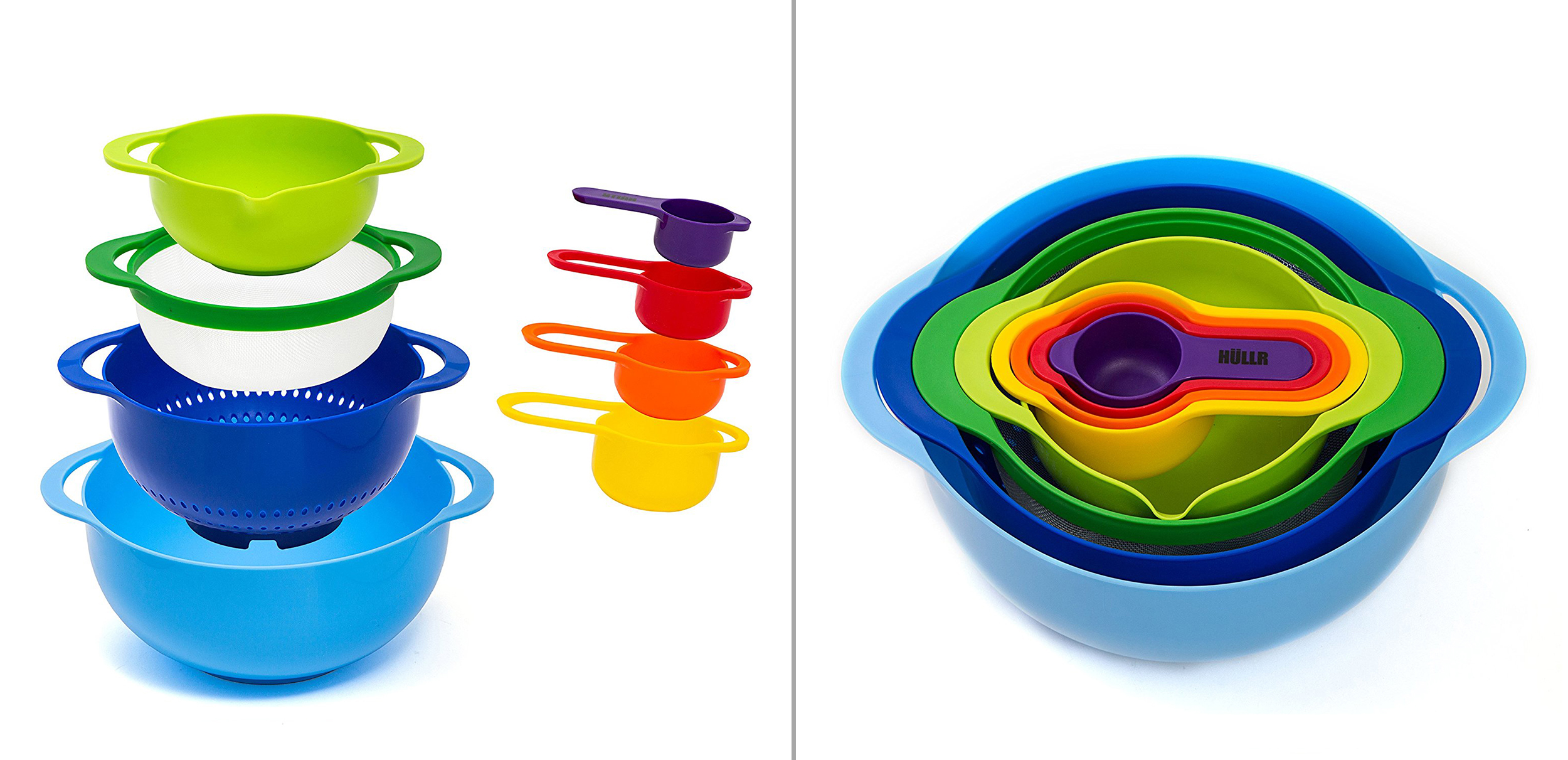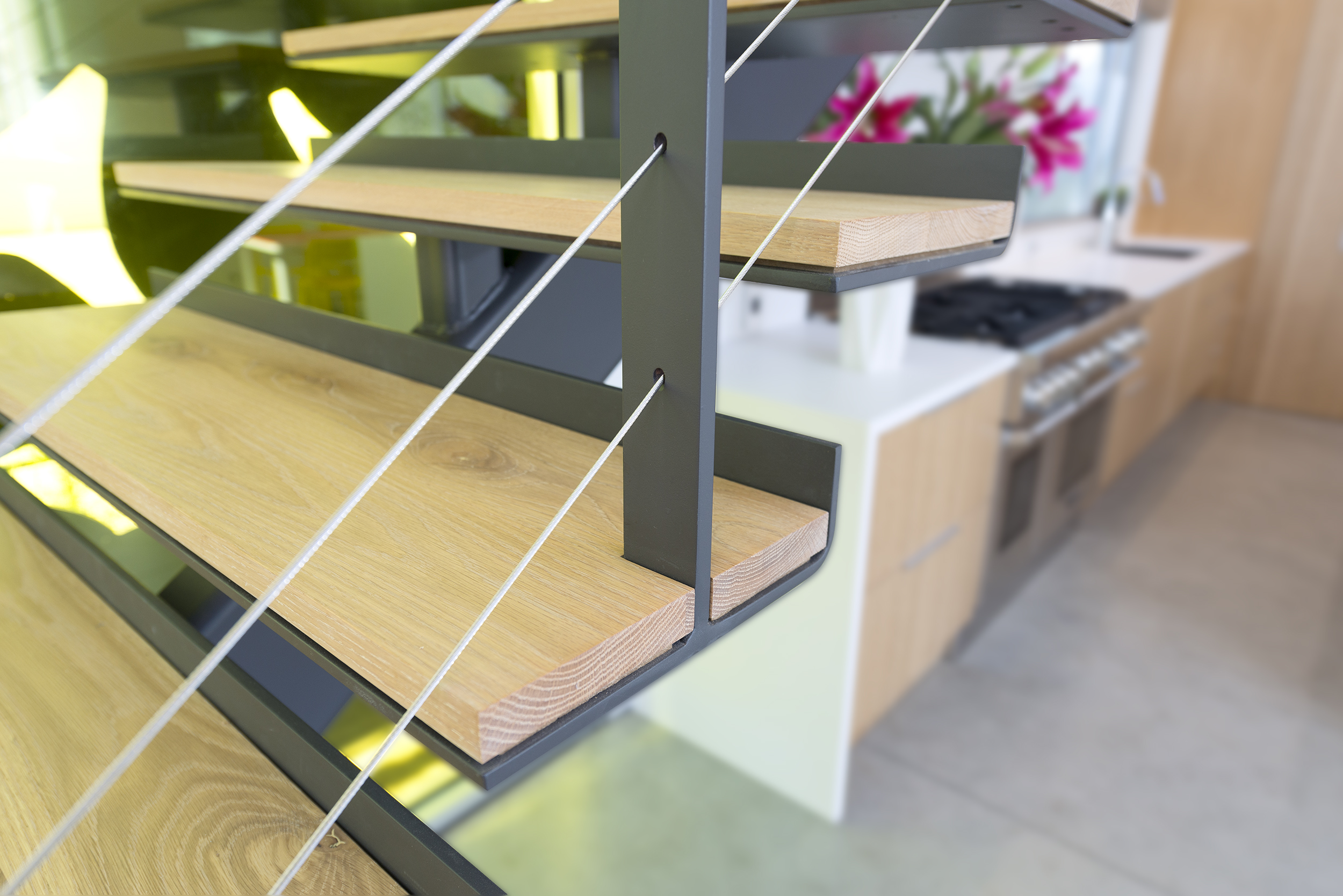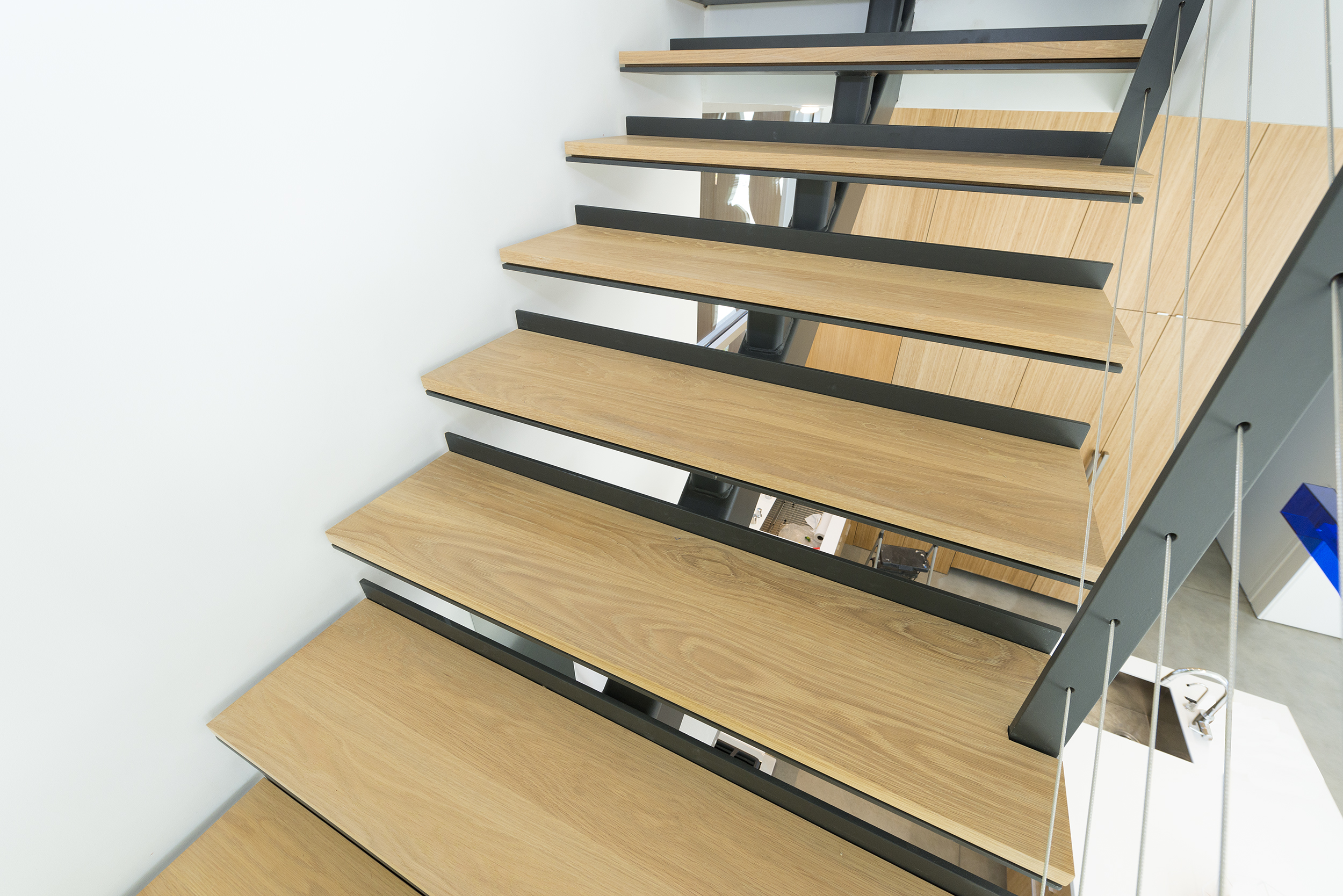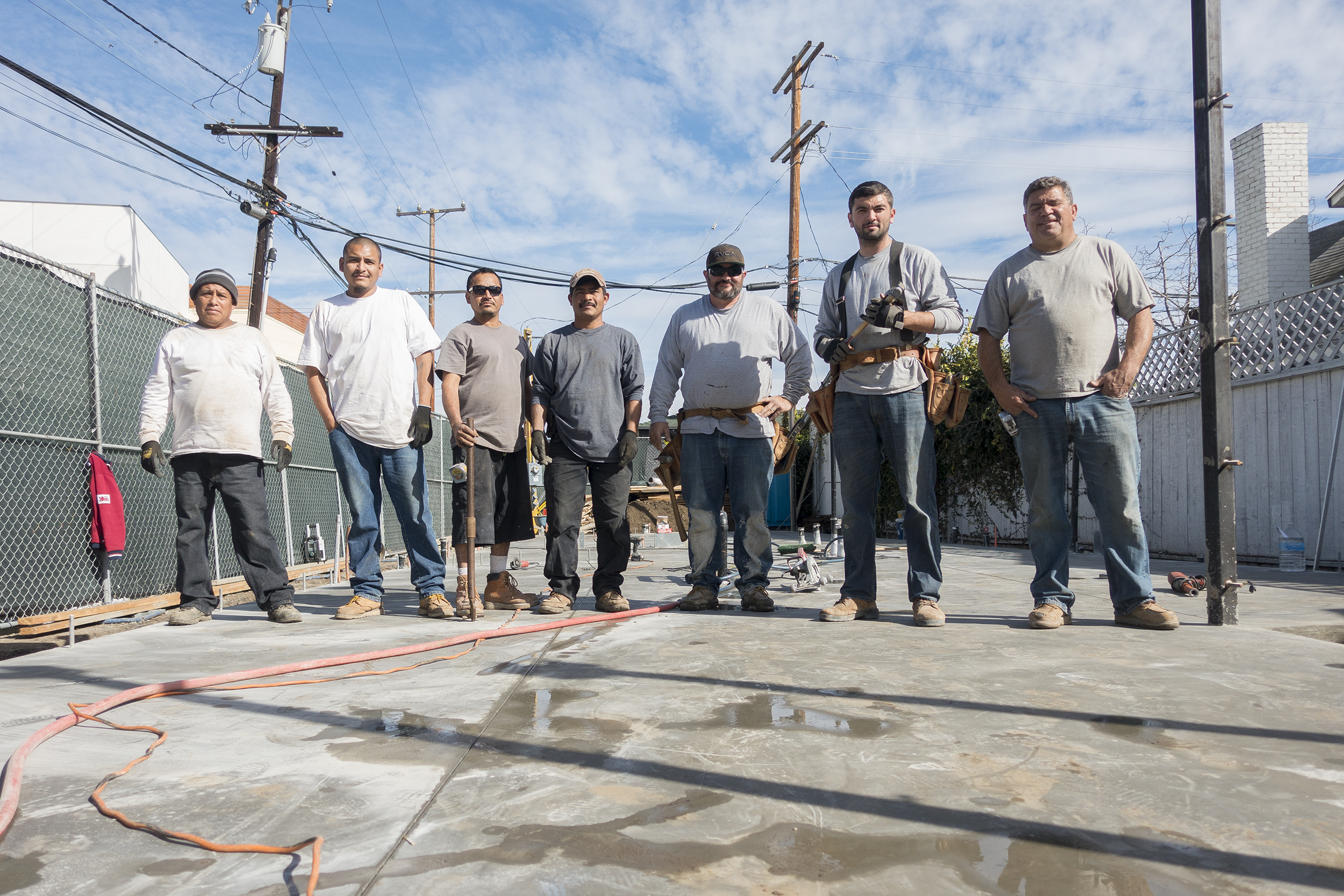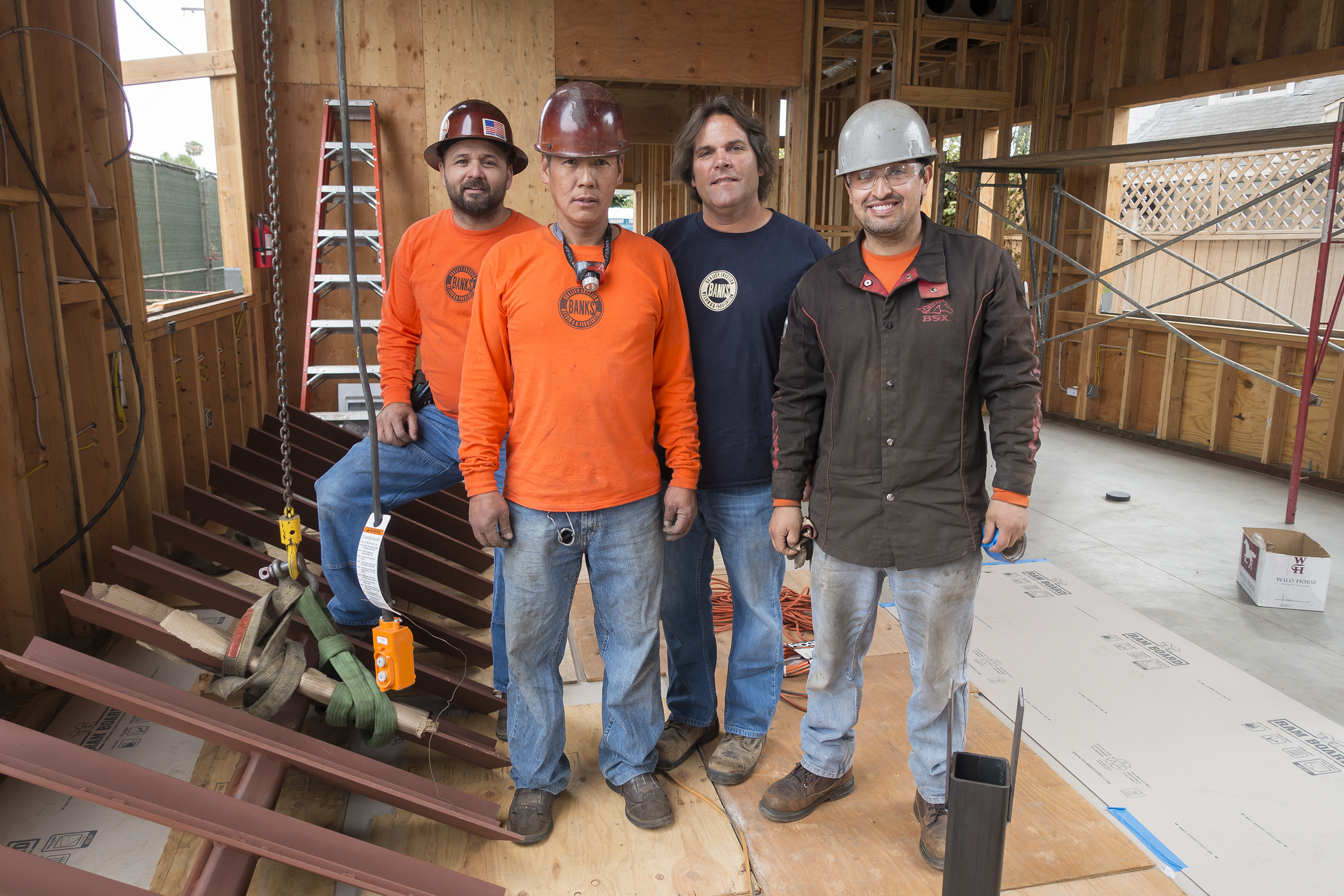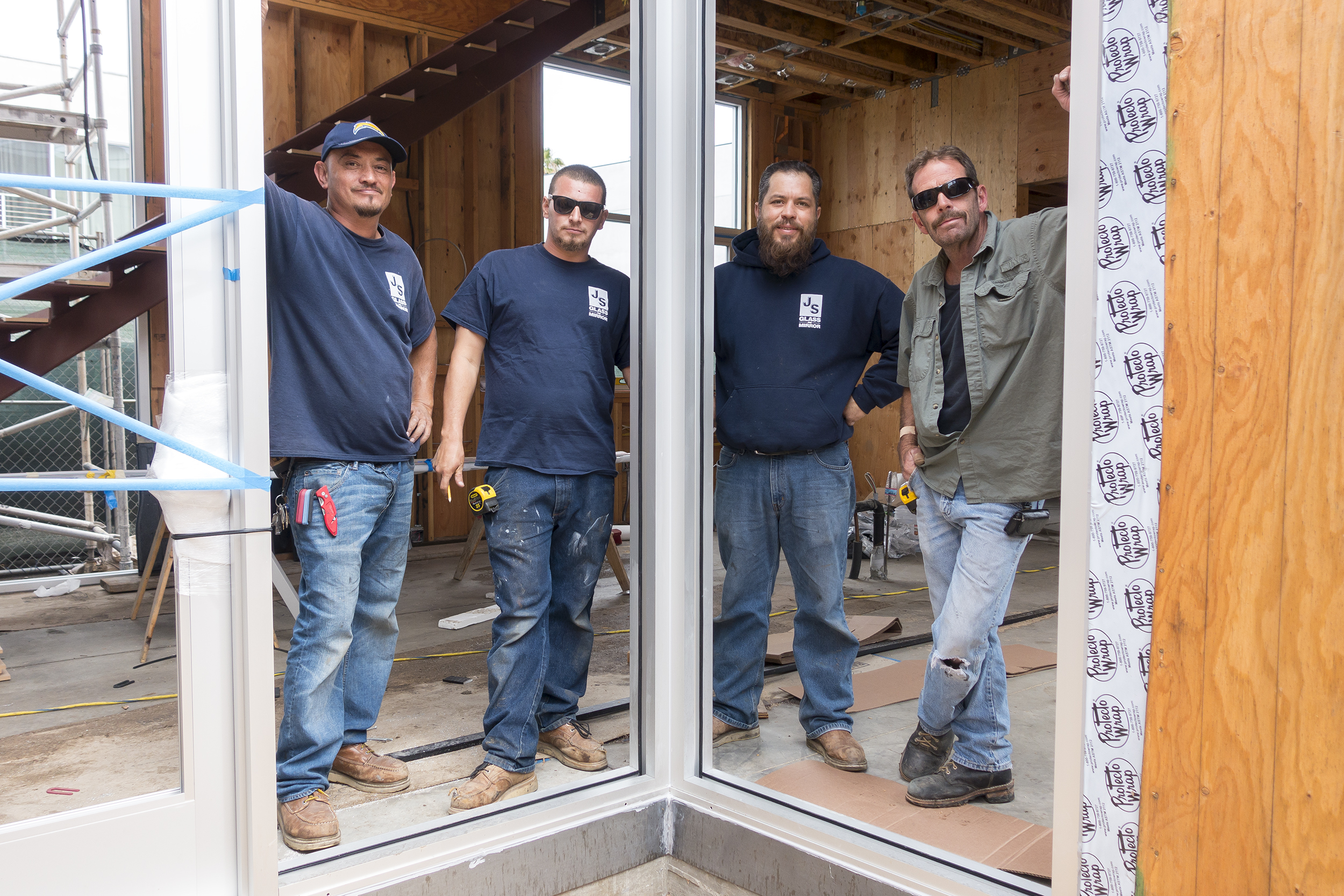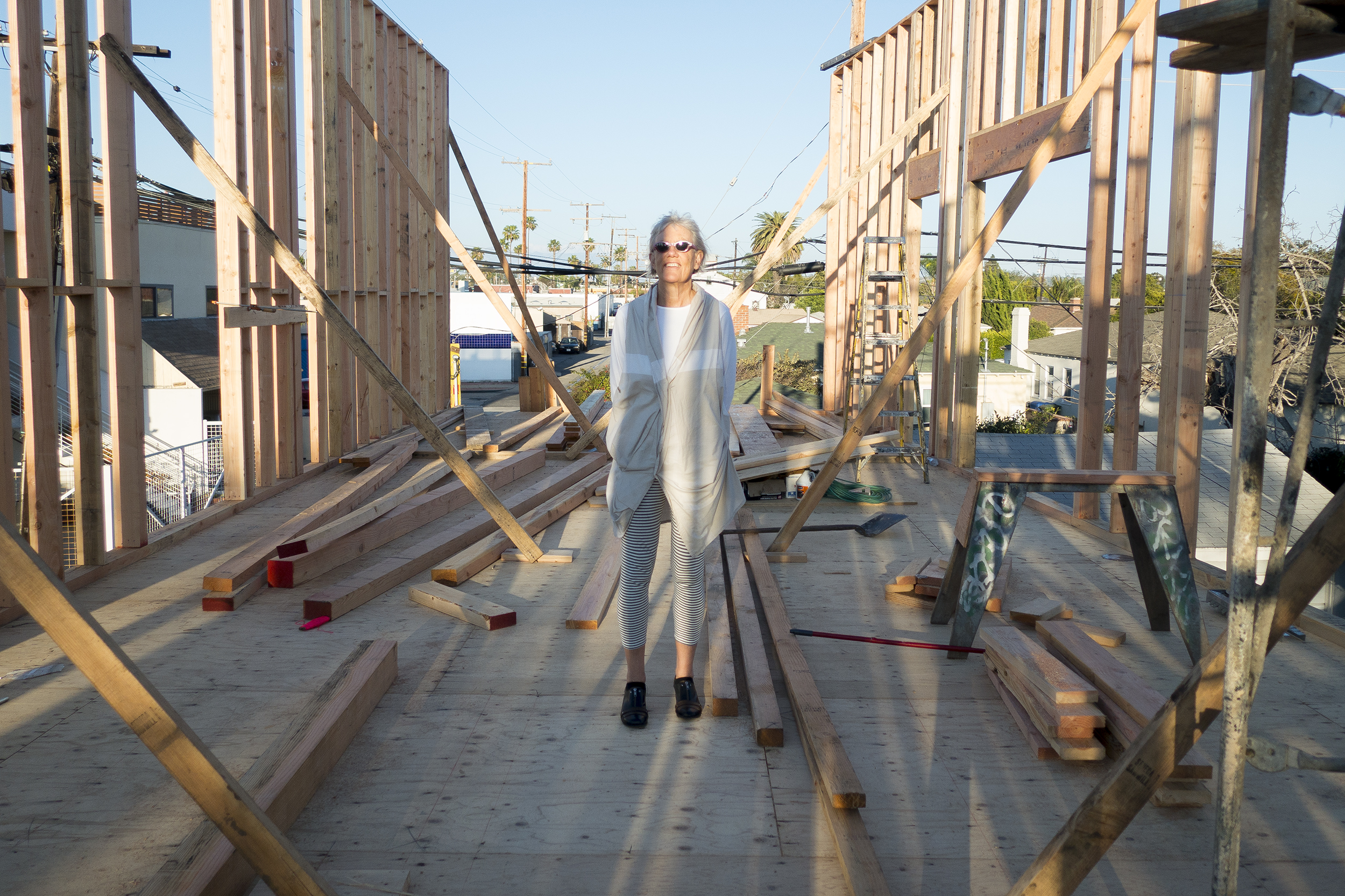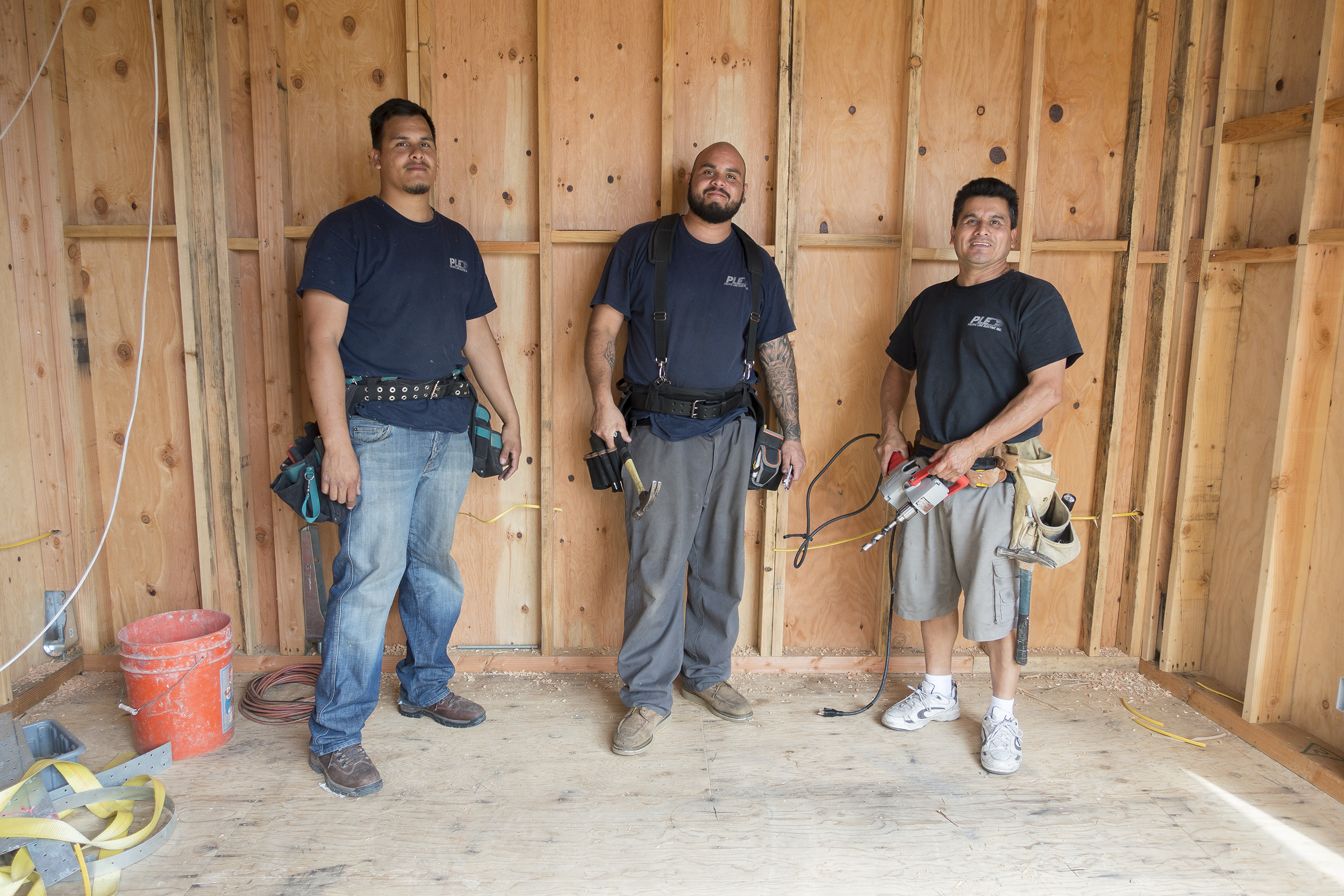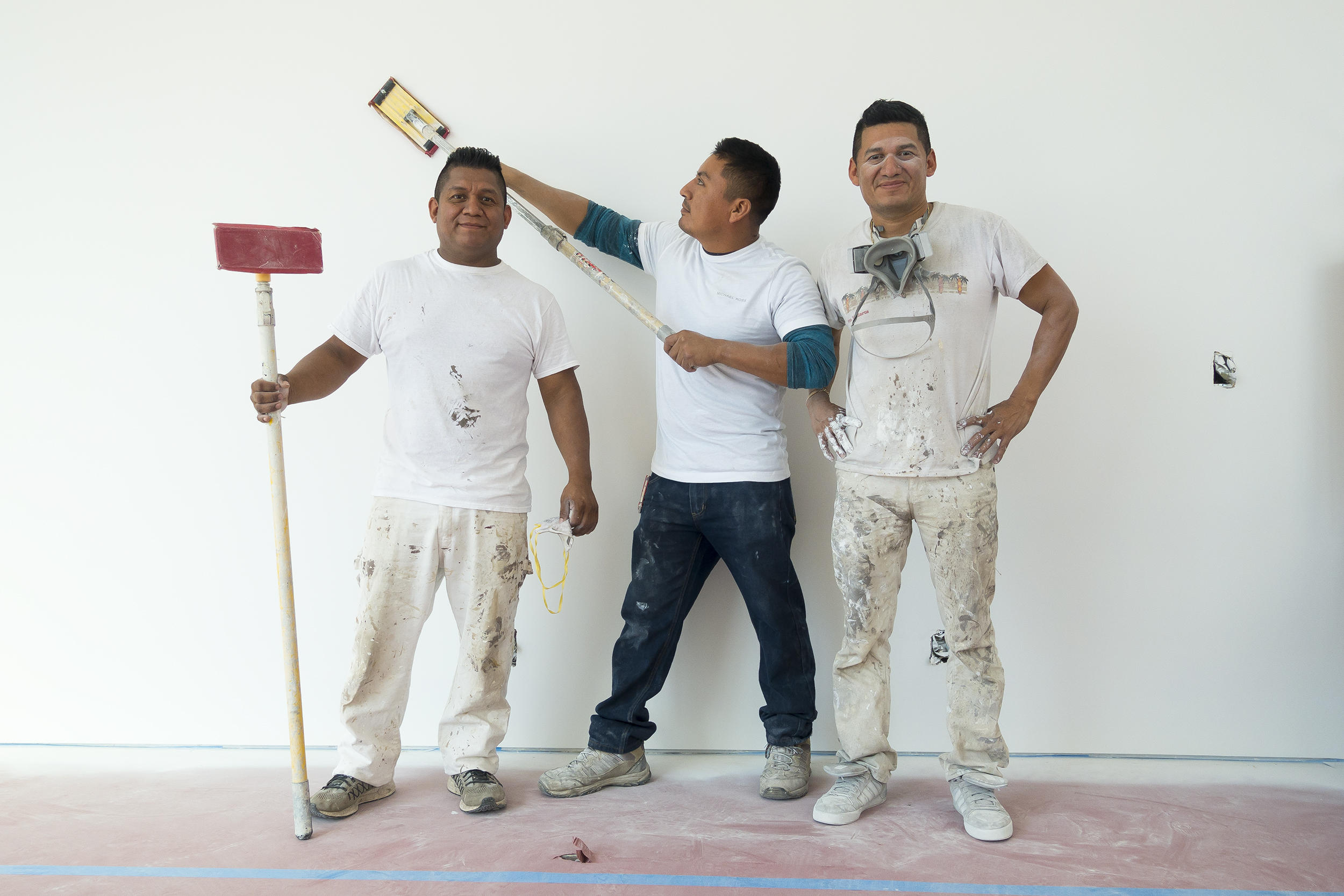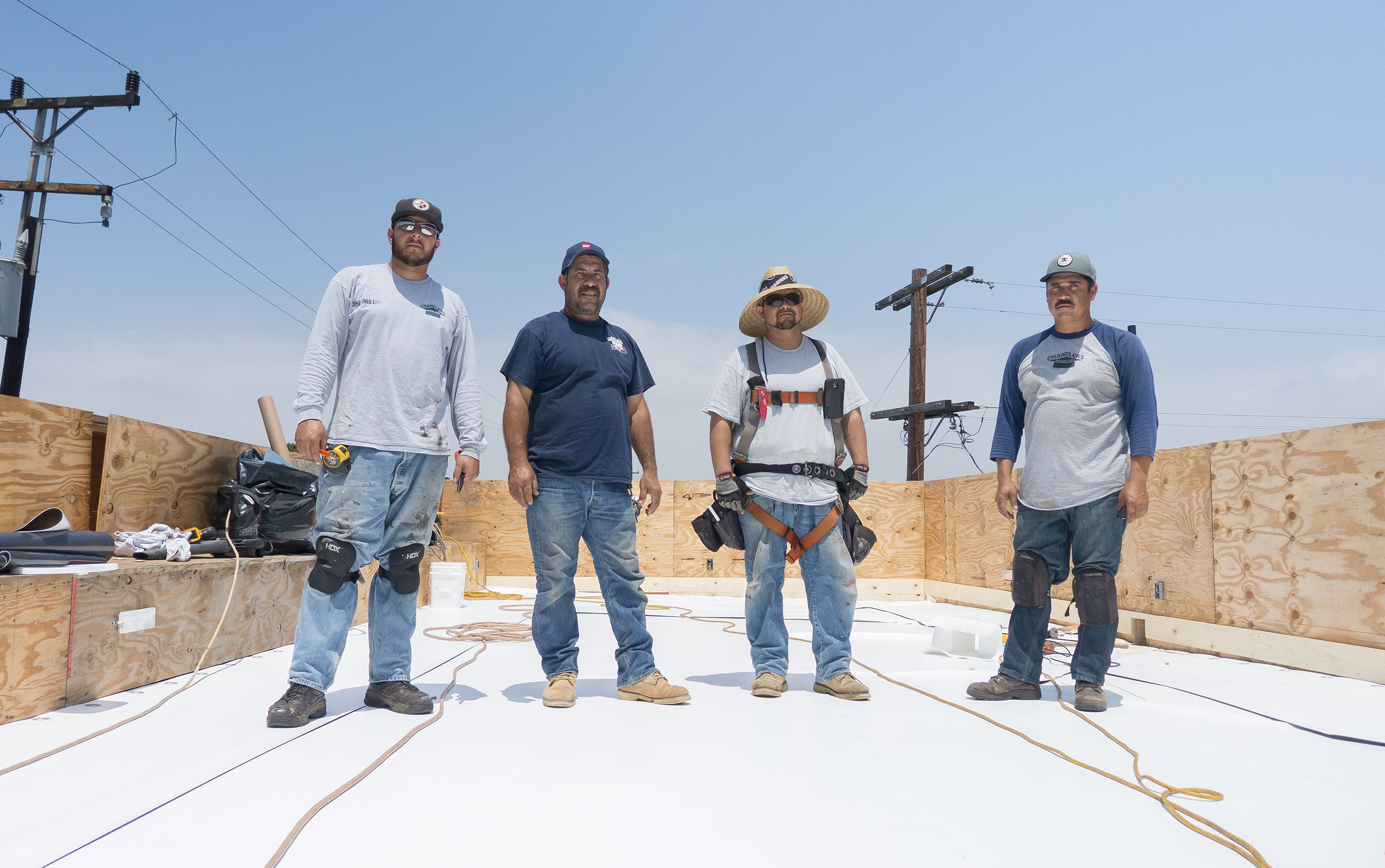tour
The new Venice home of architect and Electroland Principal Cameron McNall is an extraordinary light-filled design experience wrapped in an innovative 3,000. sq.ft. facade of decorative computer-cut metallic flowers. The house is perfectly situated 1.9 miles from the beach in the west-Washington area, within walking distance of every required service or amenity.
The 110-foot facade surrounds two sides of the building to create privacy, frame views, and generate provocative light effects. Each tall-ceilinged room displays a unique quality of light, shape, and distinct personality. The impressive architecture, high-quality construction and attention to fine detail are exceptional. This boutique house is built to City of Los Angeles "Green Building" standards. The architect has carefully curated and/or designed all furniture, artwork and objects to create a complete work of art.
Architect's statement: "I designed 4016 Tivoli for my family as a total design living experience that represents my relationship to art, architecture and design. Although I was just a child when I lived in California in the sixties, I was very influenced by the energy and graphics of that period, everything from Warhol to the Mexico '68 Olympics to Fillmore West concert flyers. I spent my teenage years in Europe, during which time I gained a deeper understanding of and respect for architecture, and became enamored with the discipline of German/Swiss design and the humor of Italian design. Most particularly, I adopted the Italian philosophy of design “dal cucchiaio alla città” (from the spoon to the city), where the architect applies a unified design philosophy and creativity to everything from small objects to environments. The result is "total design"- you see it, live it and feel it. When people walk by the house or visit inside, I am pleased that it elicits a smile and a contagious happiness. Now you know my secrets."
The house is already gaining international attention: Featured sites include:
http://inhabitat.com/this-flower-clad-home-that-spreads-contagious-happiness-goes-on-sale-in-l-a/
http://design-milk.com/a-venice-california-home-wrapped-in-computer-cut-flowers/
http://www.alpolic-americas.com/project/tivoli-house/
https://www.dwell.com/home/4016-tivoli-007b2de6
https://www.thetimes.co.uk/article/in-hollywood-even-estate-agents-are-stars-zhwww7832
https://www.youtube.com/watch?v=v5pKHkprA-o
http://inspicio.fiu.edu/video-categories/the-multi-talented-cameron-mcnall/
Light and shadows generated from the facade shift and change all day with the movement of the sun.
Attention is given throughout the building to create an ever-changing complex mix of reflections, light and shadows.
Color and texture are employed to animate objects and spaces.
Artwork and furniture are carefully chosen and placed to create maximum visual delight. A collection of design principles guides this process:
The first principle is to impose a single color onto a series of disparate objects.
The second design principle is to use color iterations of similar objects.
The third principle uses monocolor with objects that share a similar function but display iterative forms.
These same three design principles are employed to create original custom furniture, artwork and lights. "Bricolage" is the term sometimes used by architects, "DIY IKEA hacking" is a more popular description.
Assemblage wall art and sculptures are created guided by the same design principles, to which are added composition, arrangement, and module shifting.
The artist Reeve McNall creates a mural using his trademark "non-stop" graf art designs.
A large 40' by 60" photograph in the bedroom is chosen from a new series by Cameron McNall. It is a metaphor of life; for a brief period we all fly high and alone surrounded by limitless beauty.
The house really comes alive during parties and events, and feels very much like the gallery experience the architect sought to create.
Furniture and objects are chosen to complete the carefully curated visual living experience.
The Bigshot Polaroid portrait camera was introduced in 1971 and sold for $19.95. It has no ability to focus, necessitating that the photographer move around until the subject comes into focus, which became known as the "Big Shot Shuffle." It was most famously adopted by Andy Warhol for a series of celebrity portraits. It embodies the design spirit of 4016 Tivoli: art, design and technology merge to create a pop design experience. It is also delightfully analog.
The HULLR 8-piece stackable mixing and measuring bowl set also brilliantly embodies the design principles described previously.
The stair is the centerpiece of the main living space. The pitch-perfect design is a design collaboration with Doug Banks of Banks Welding.
Every important project offers the richly rewarding opportunity to learn from and interact with other professionals who take pride in their craft. 4016 Tivoli is a testimony to their involvement.

